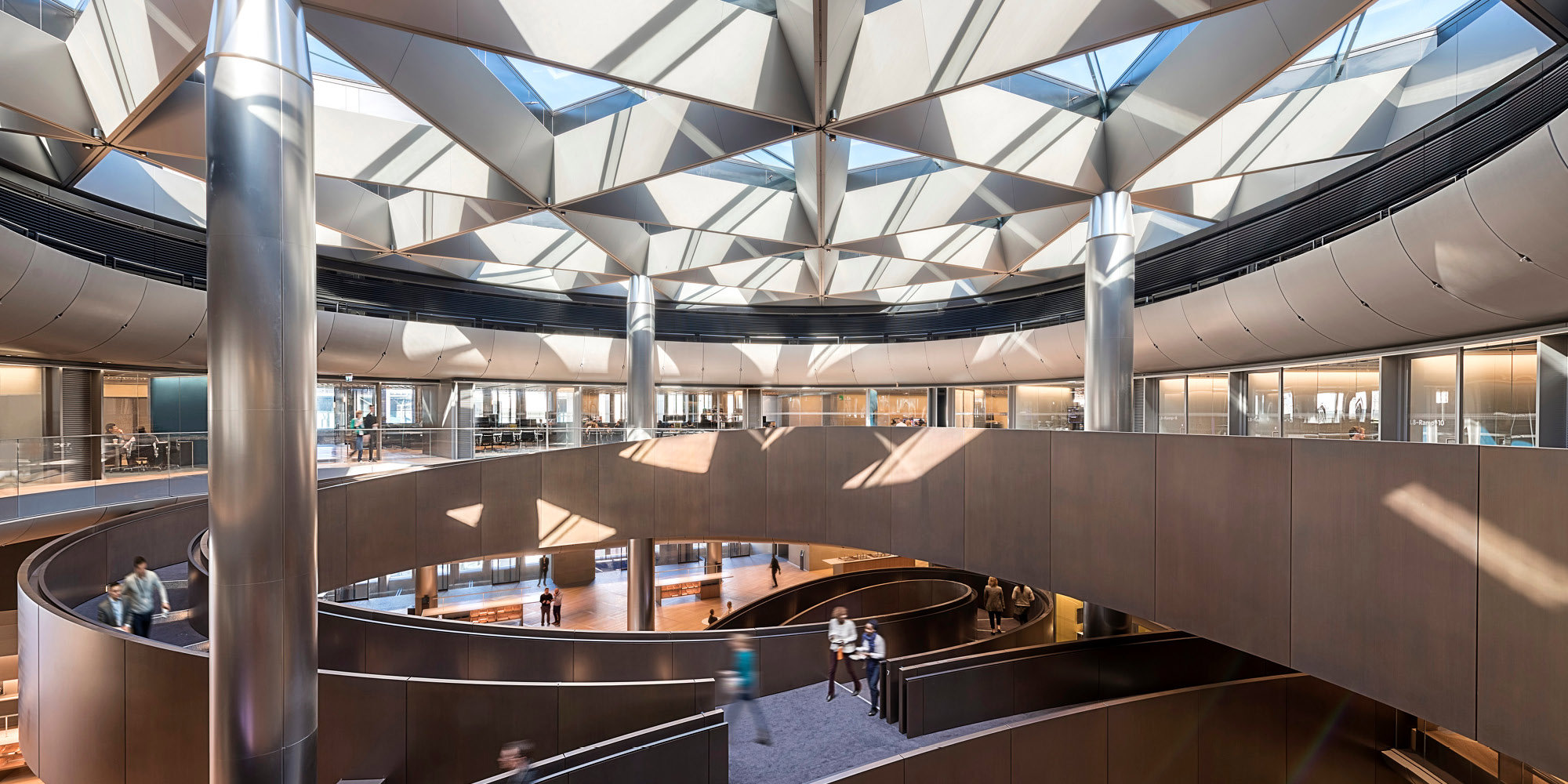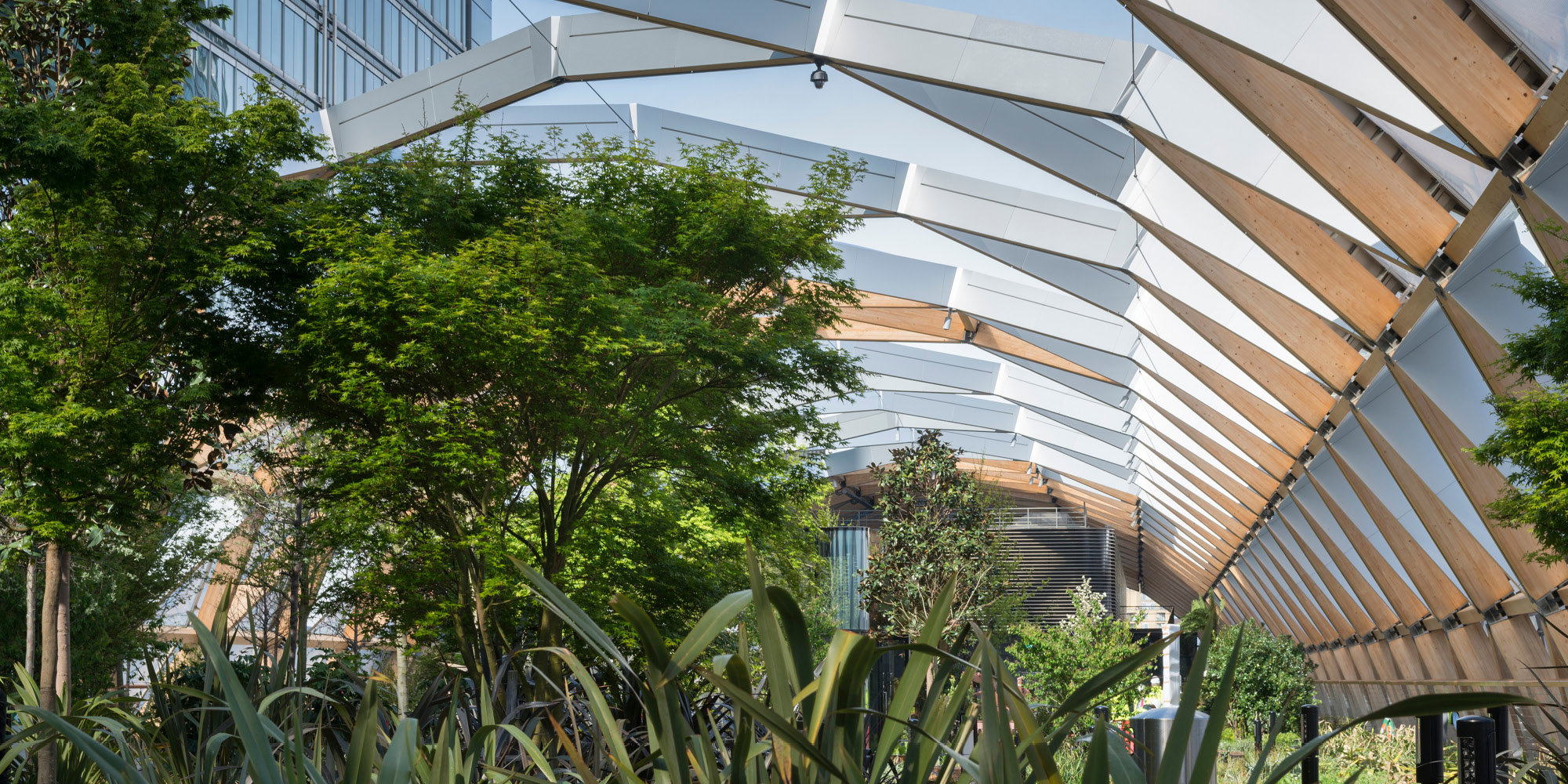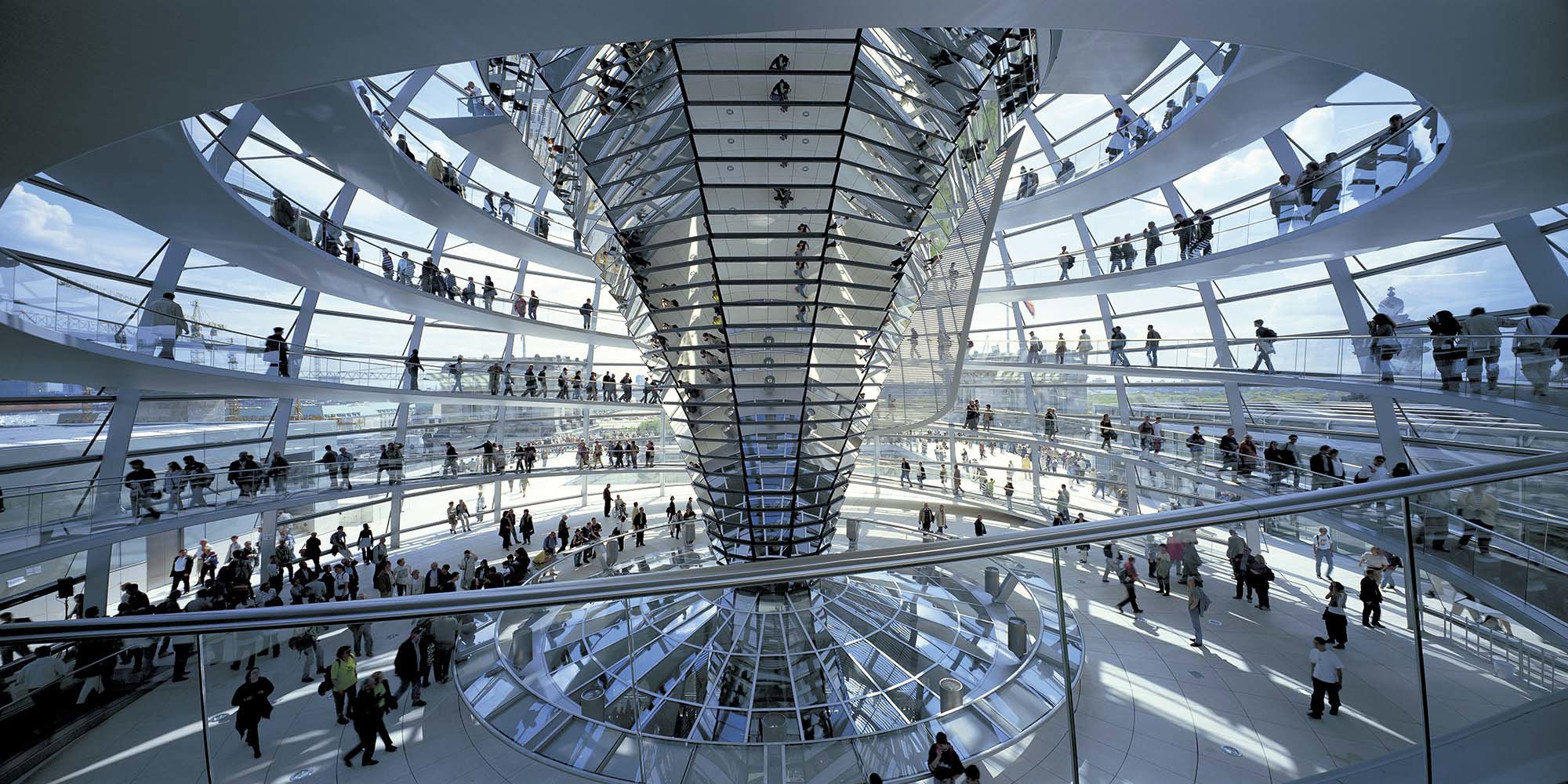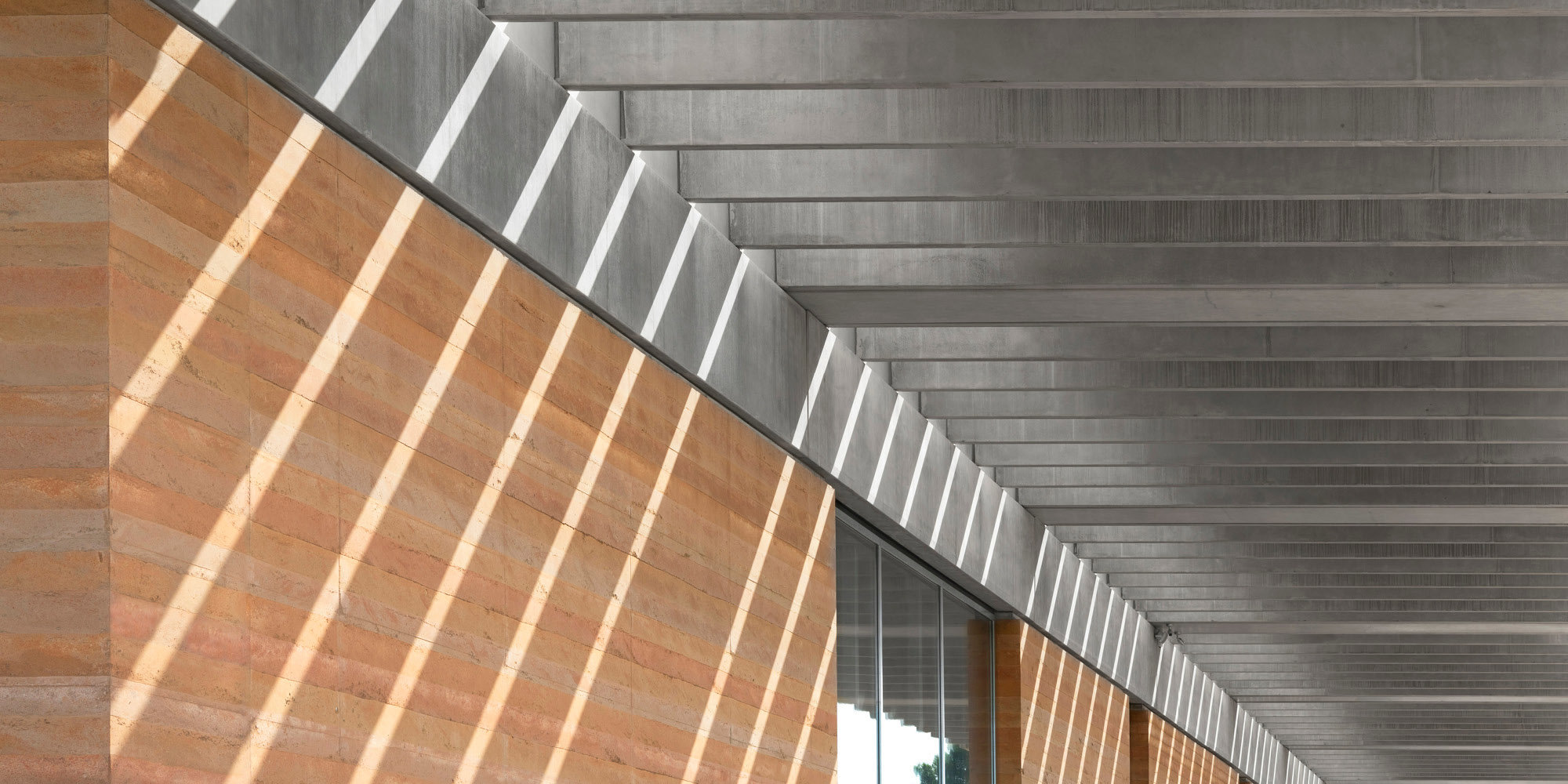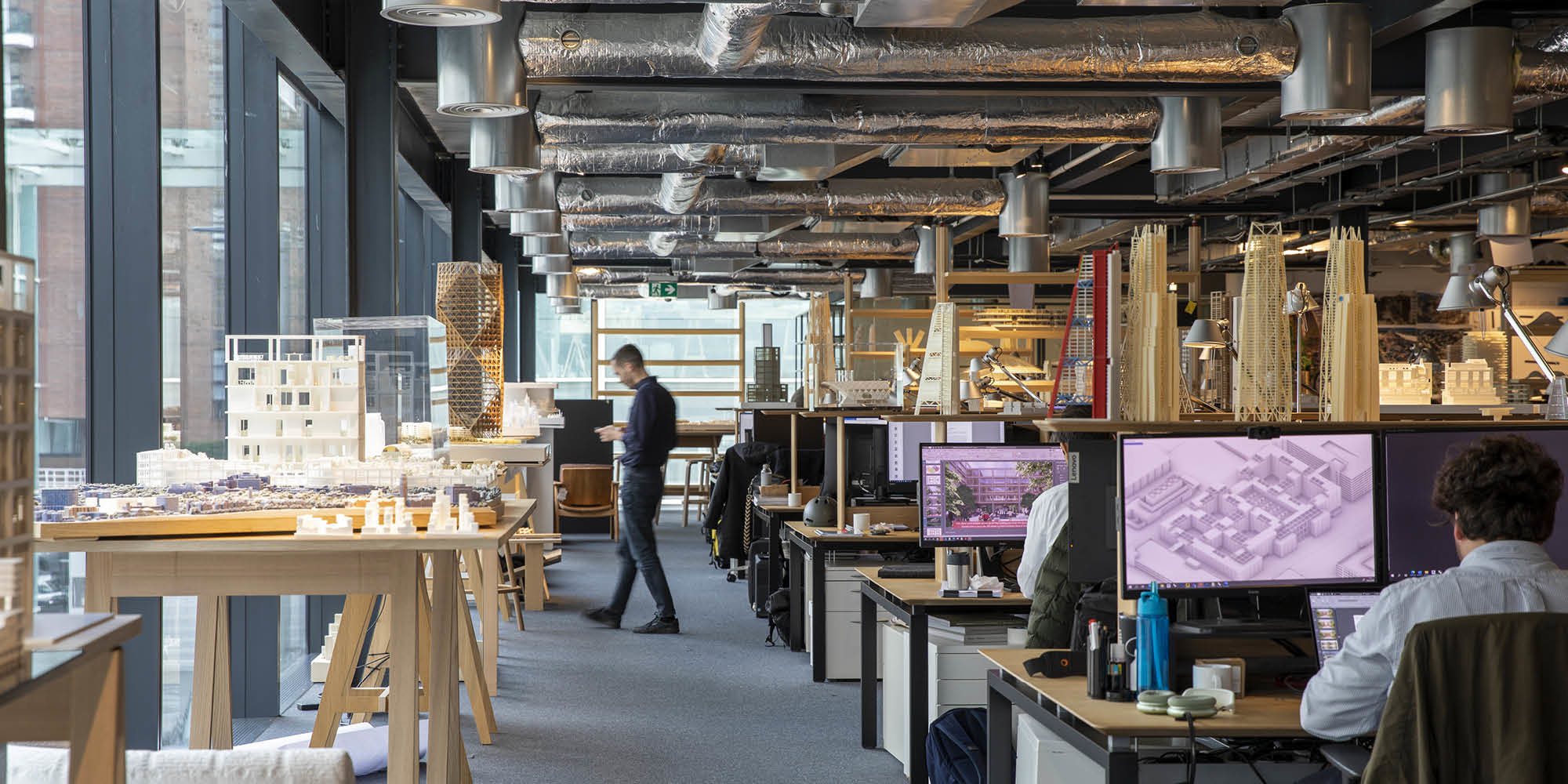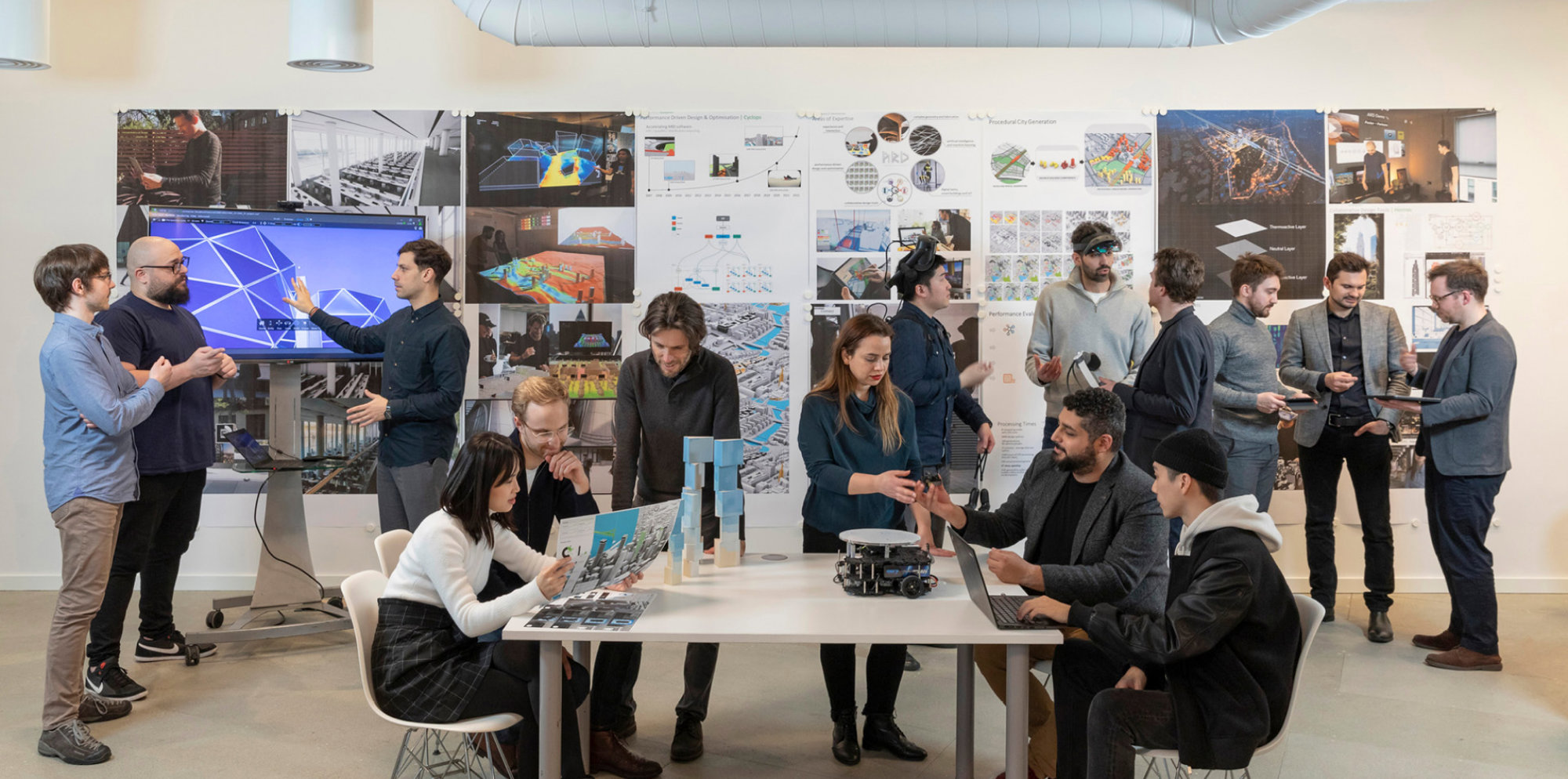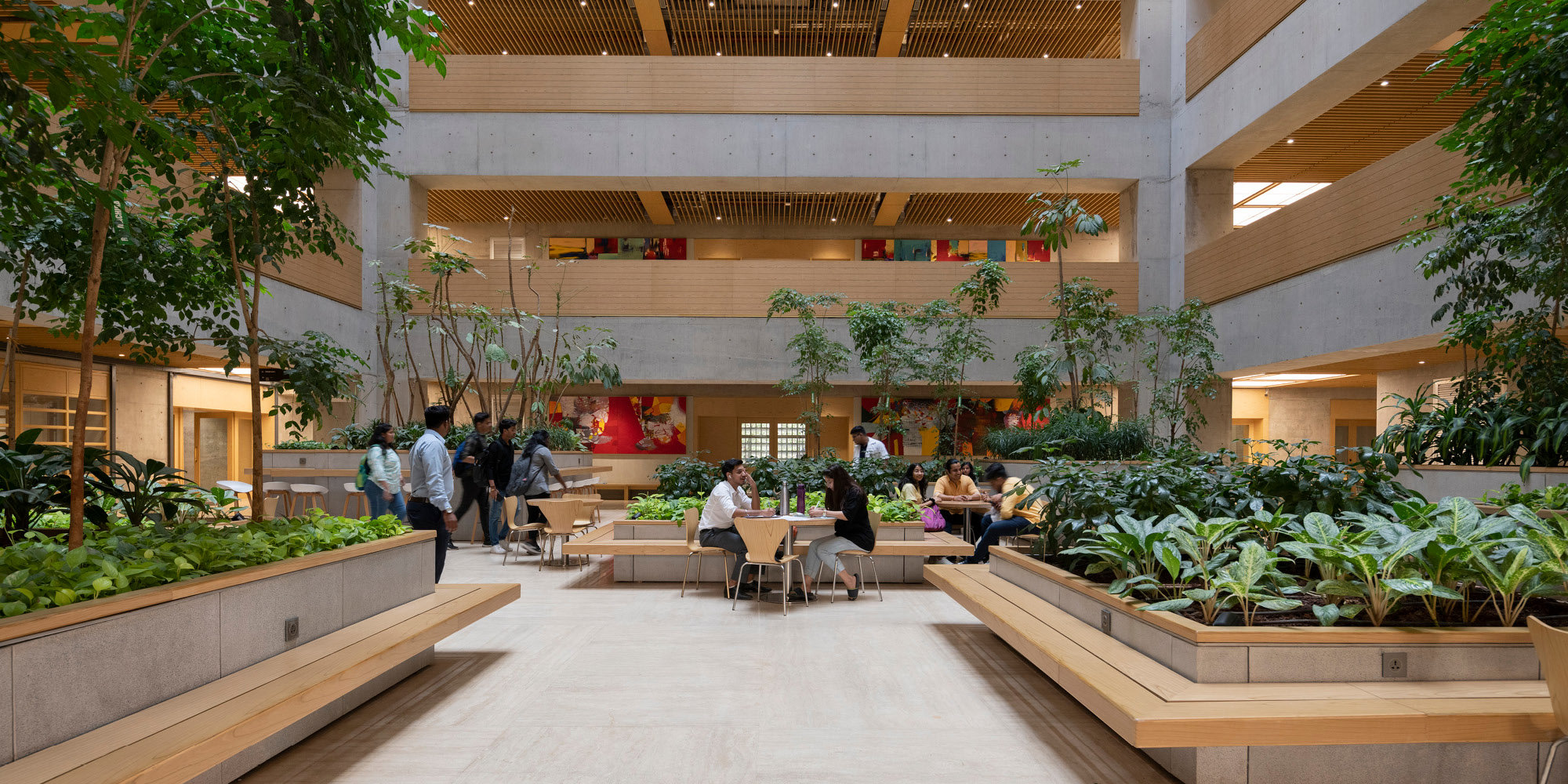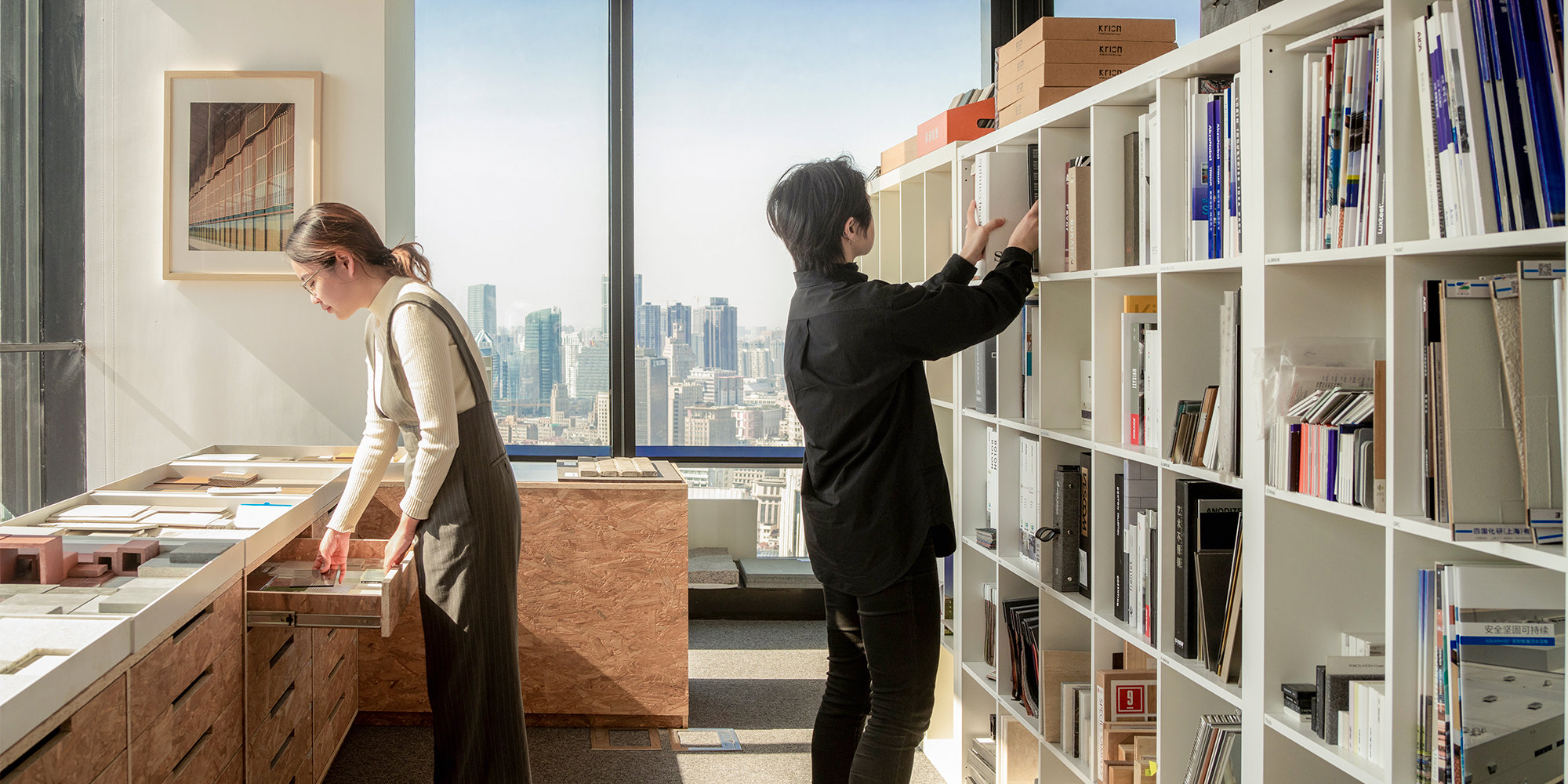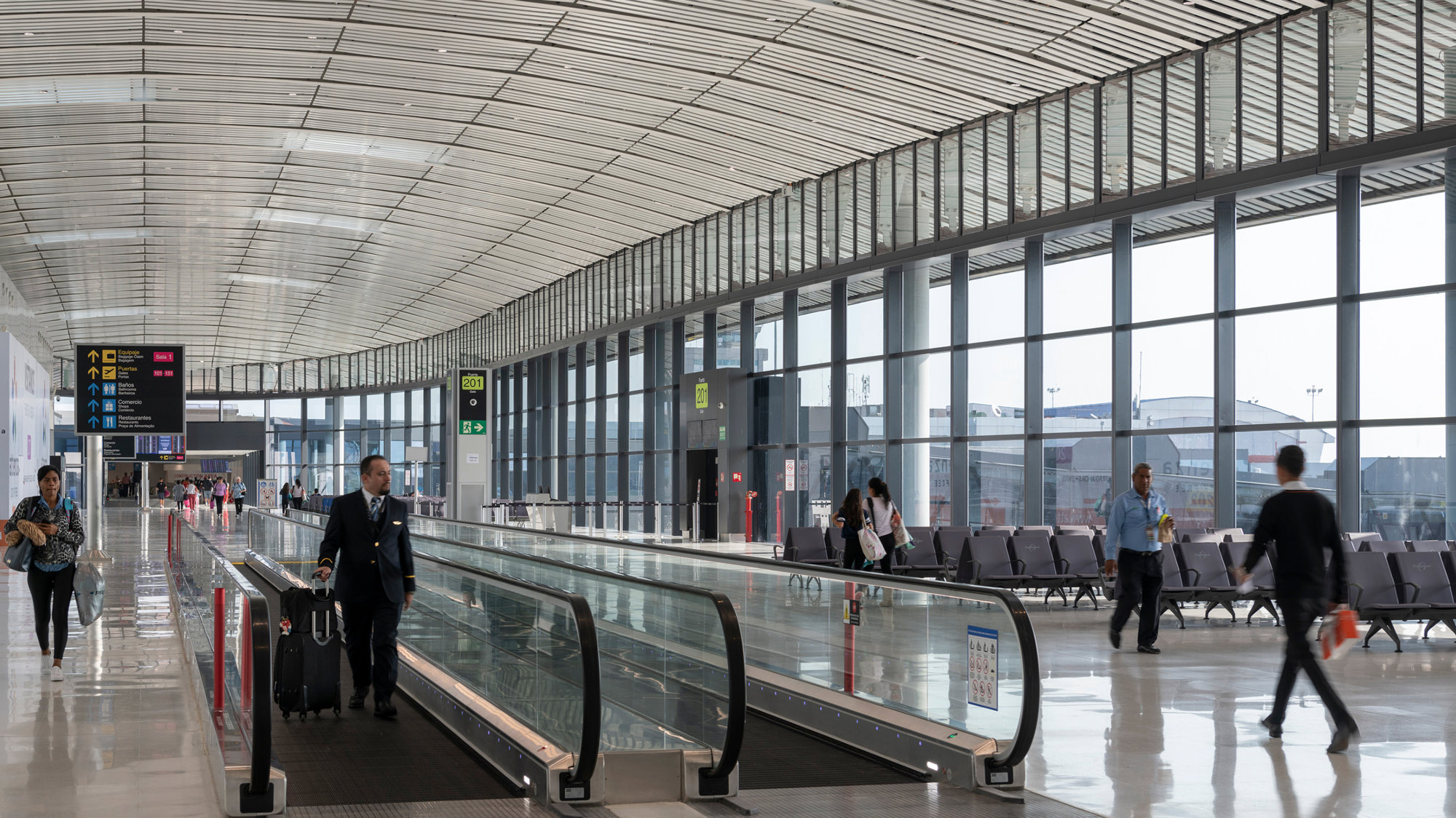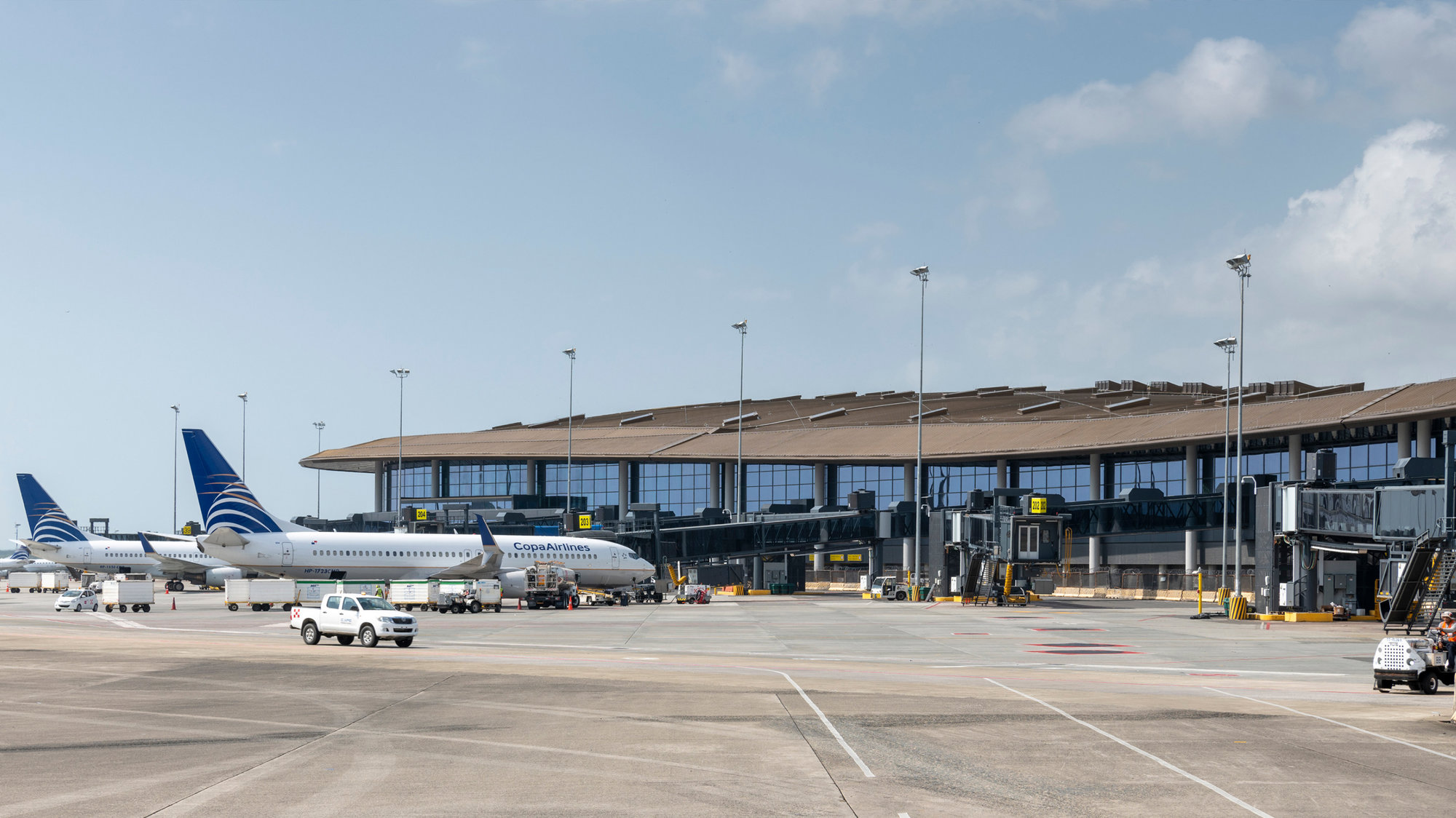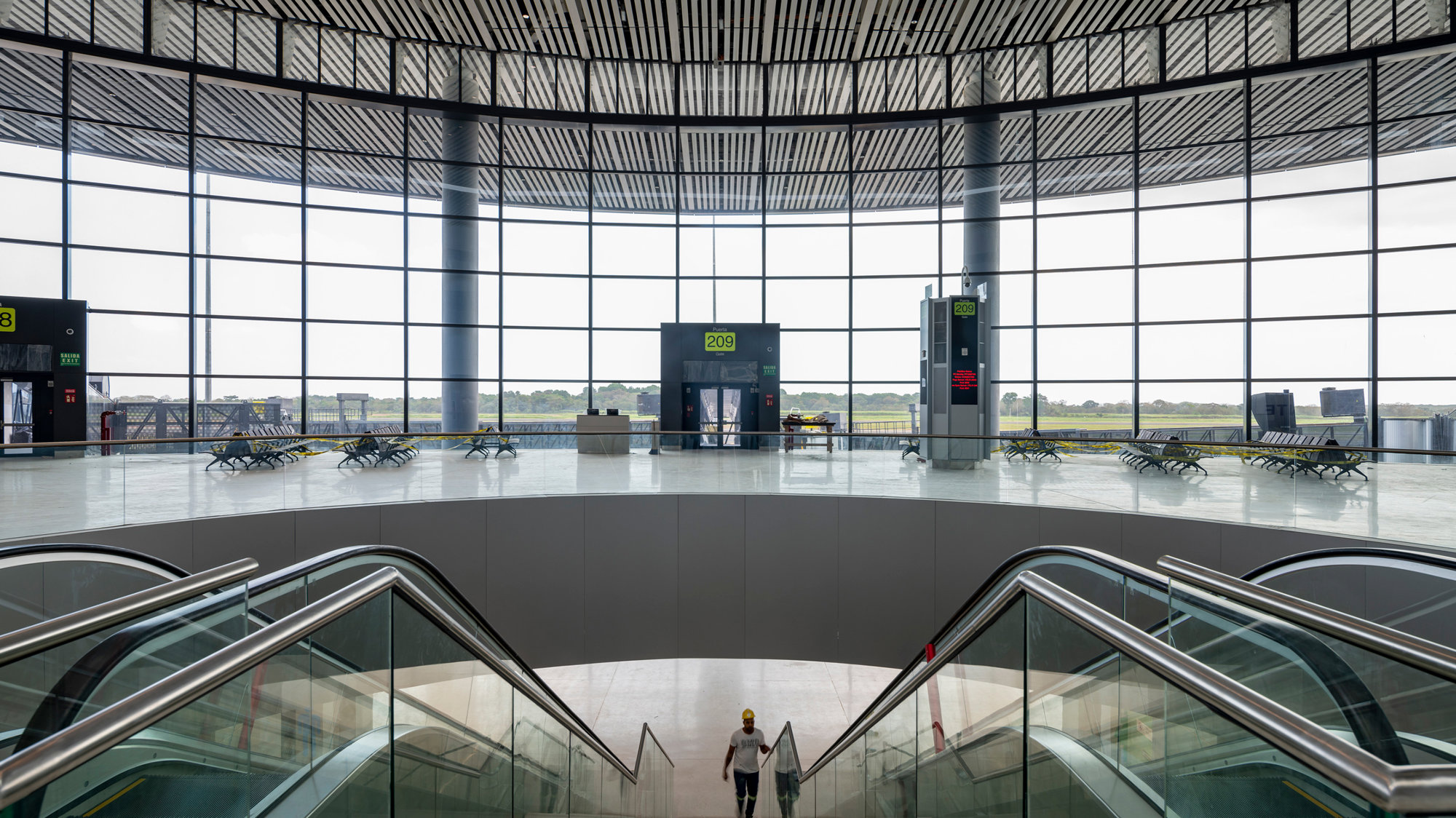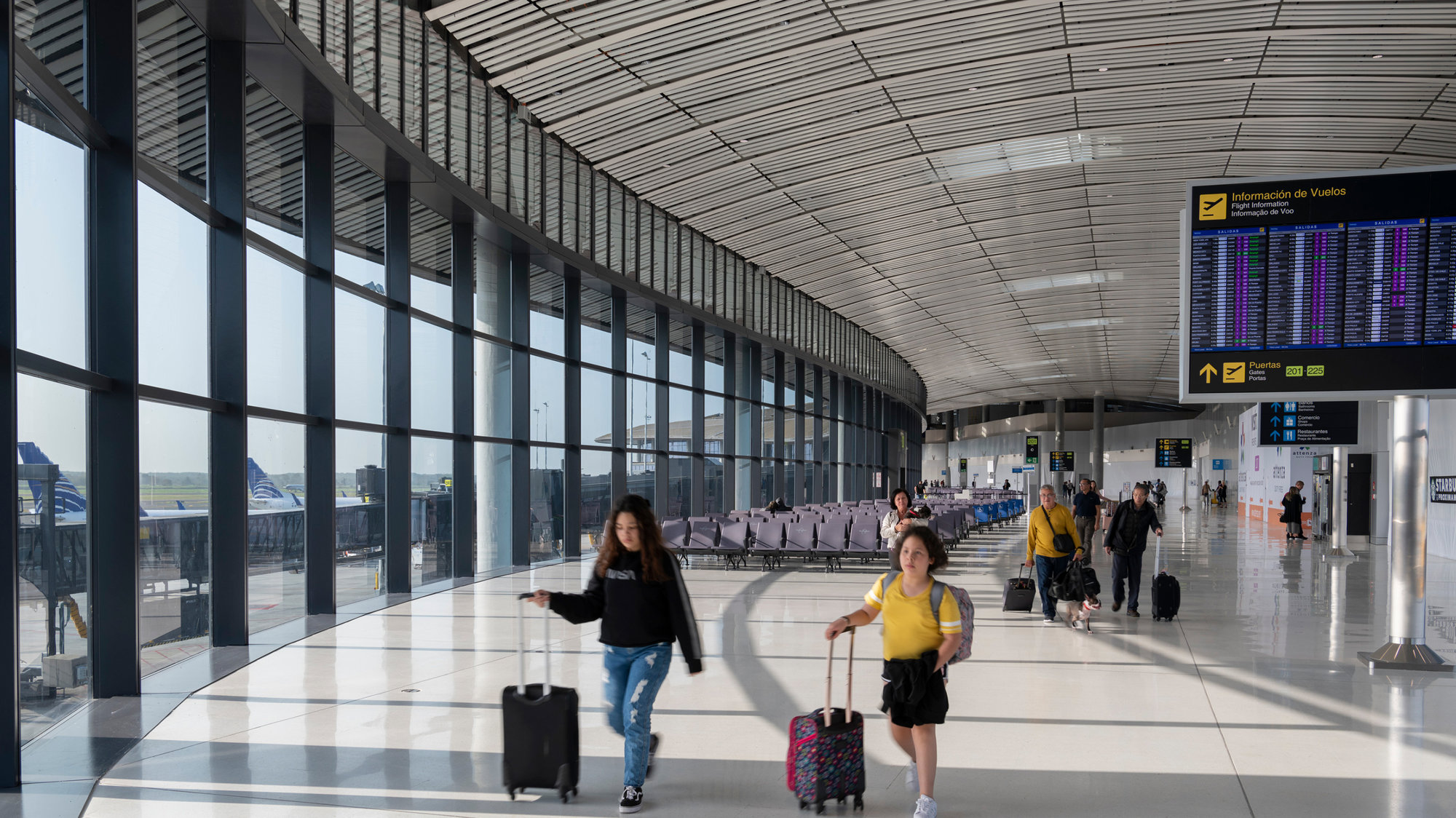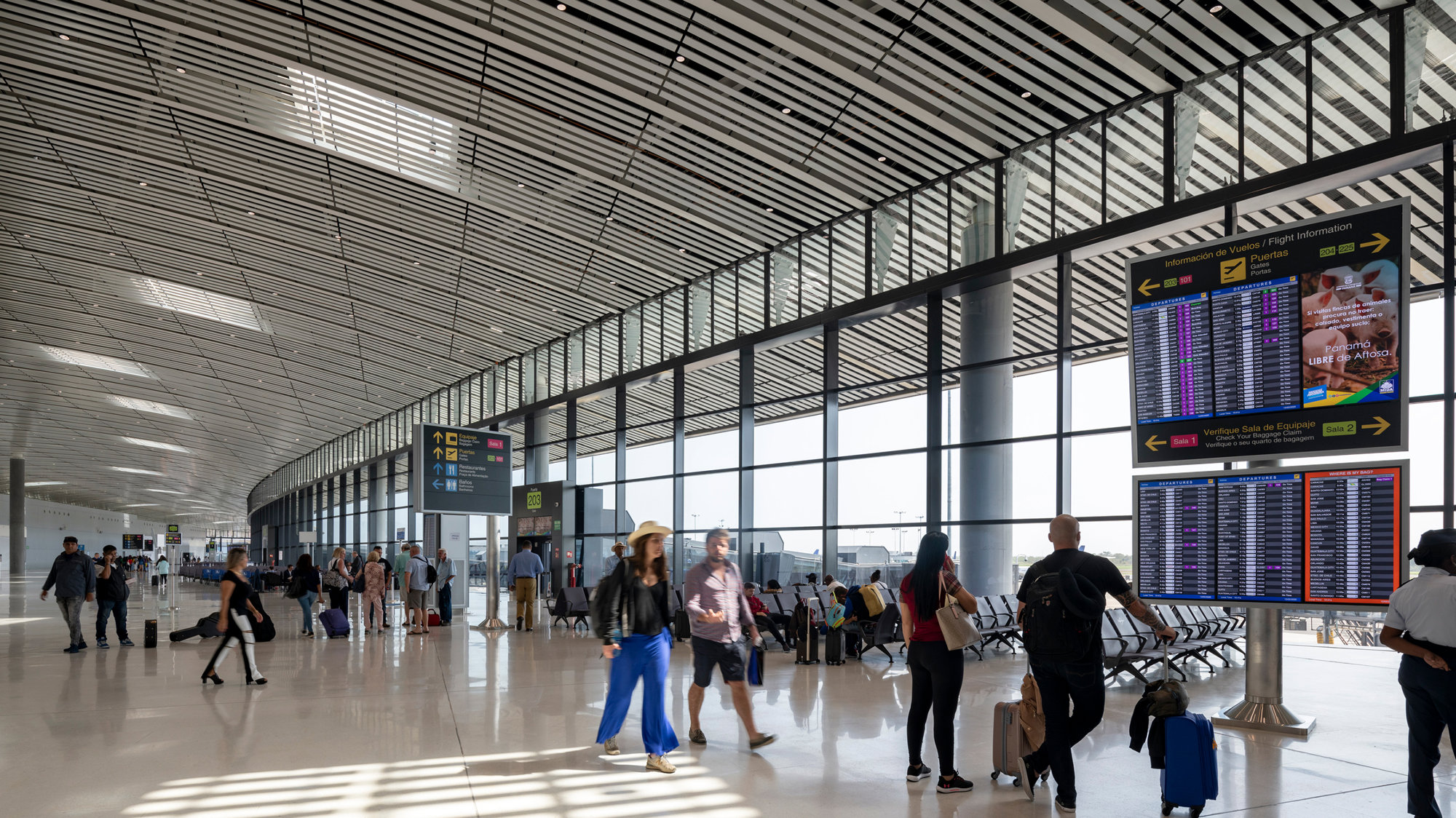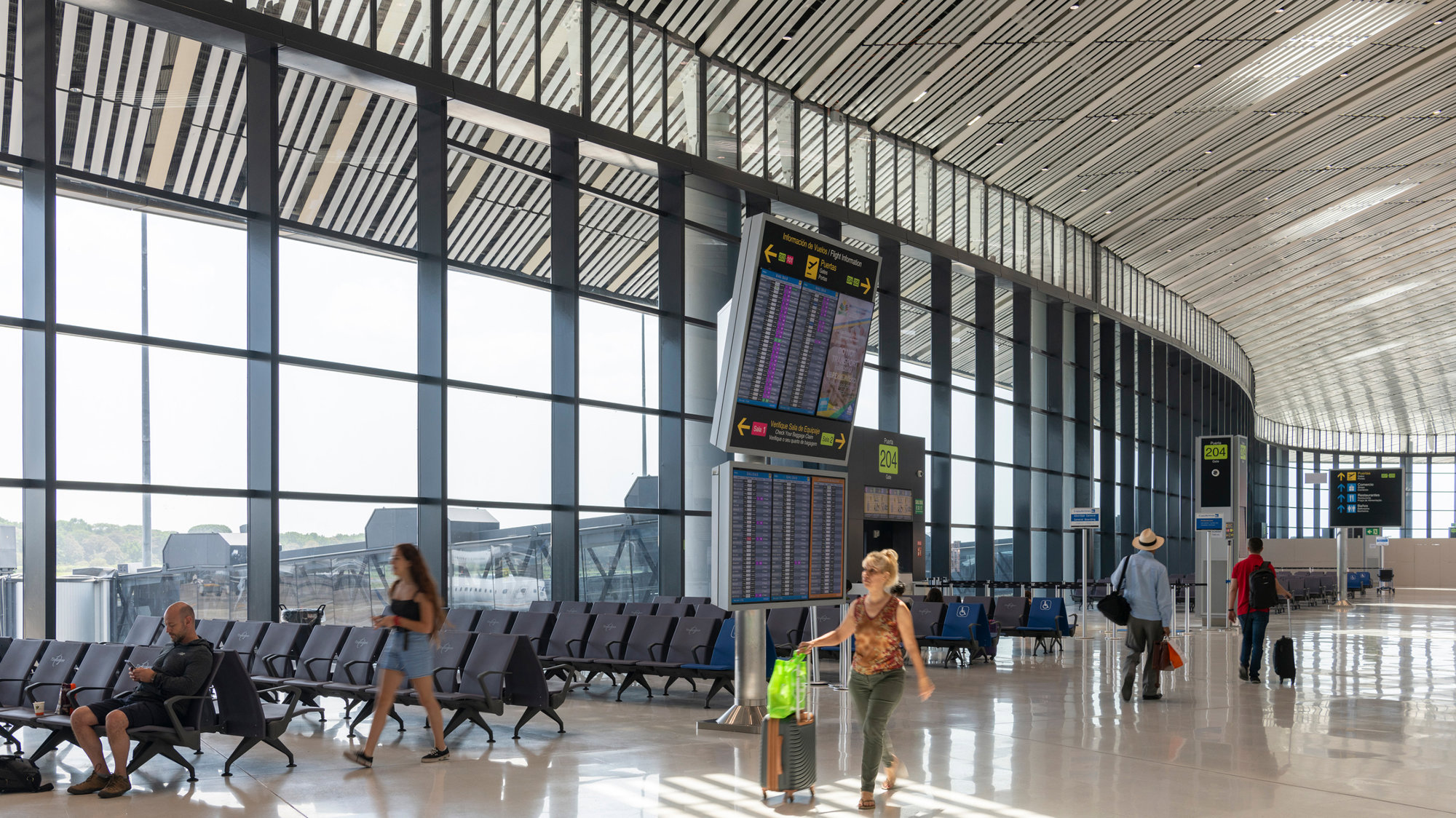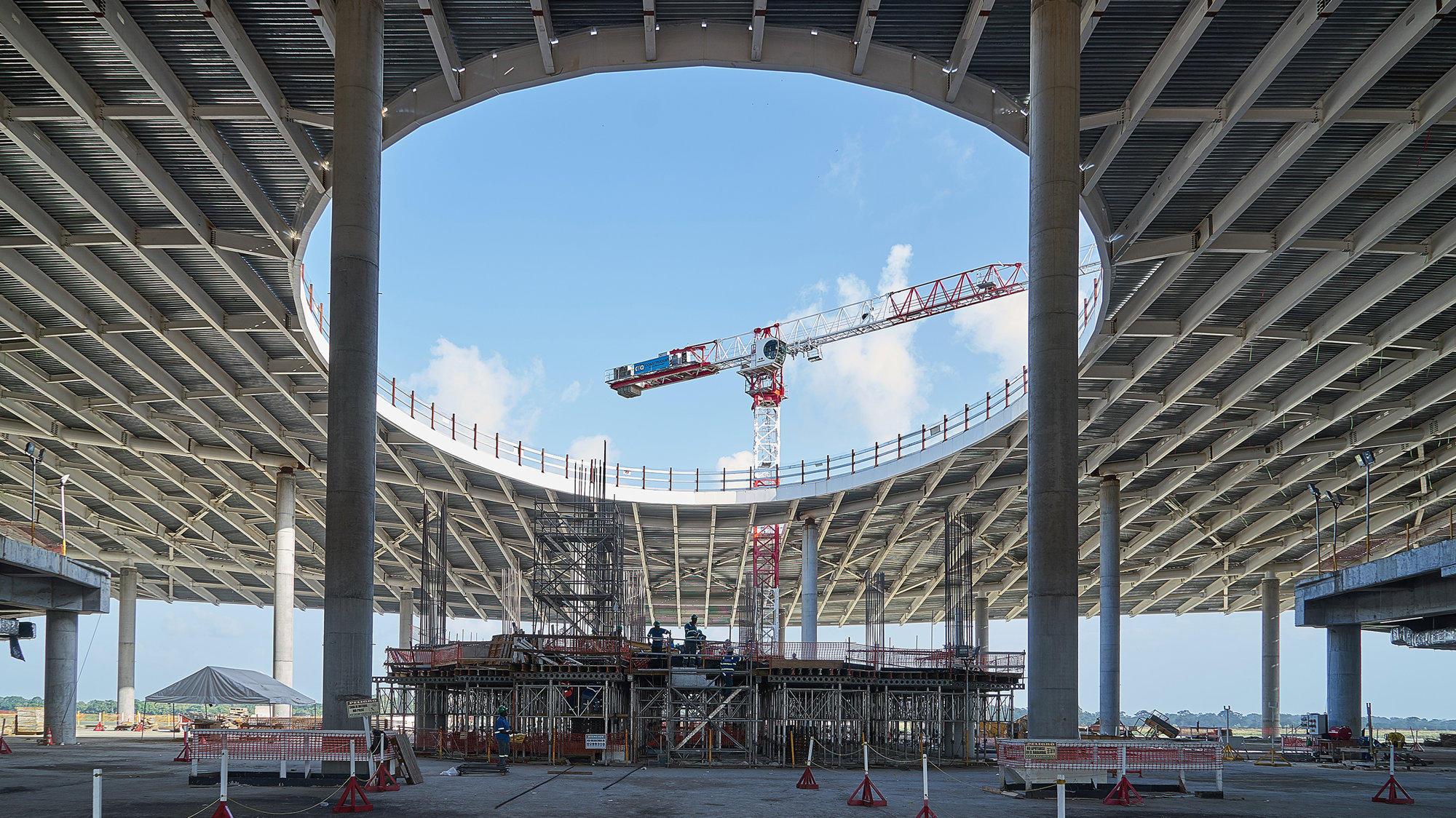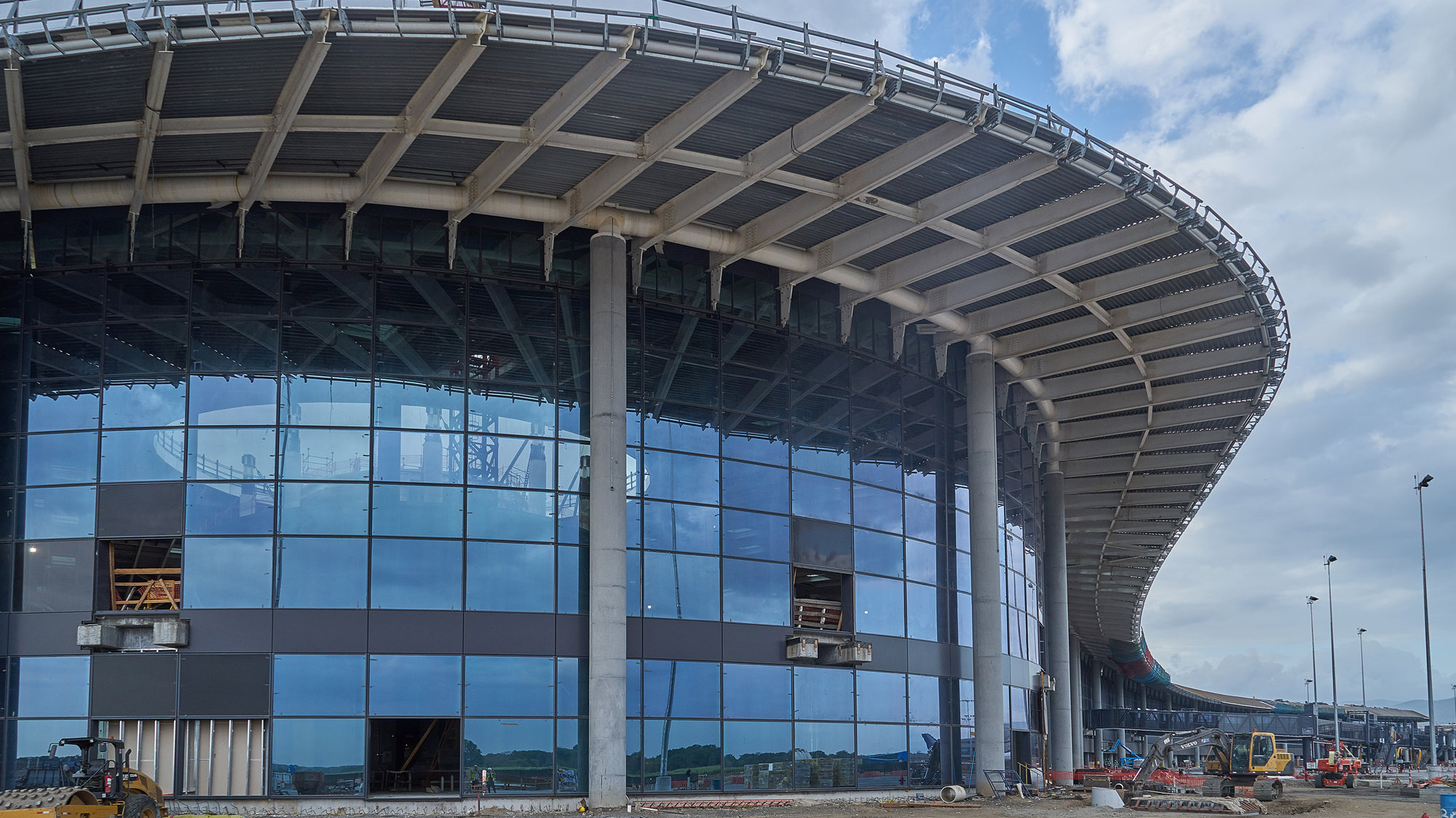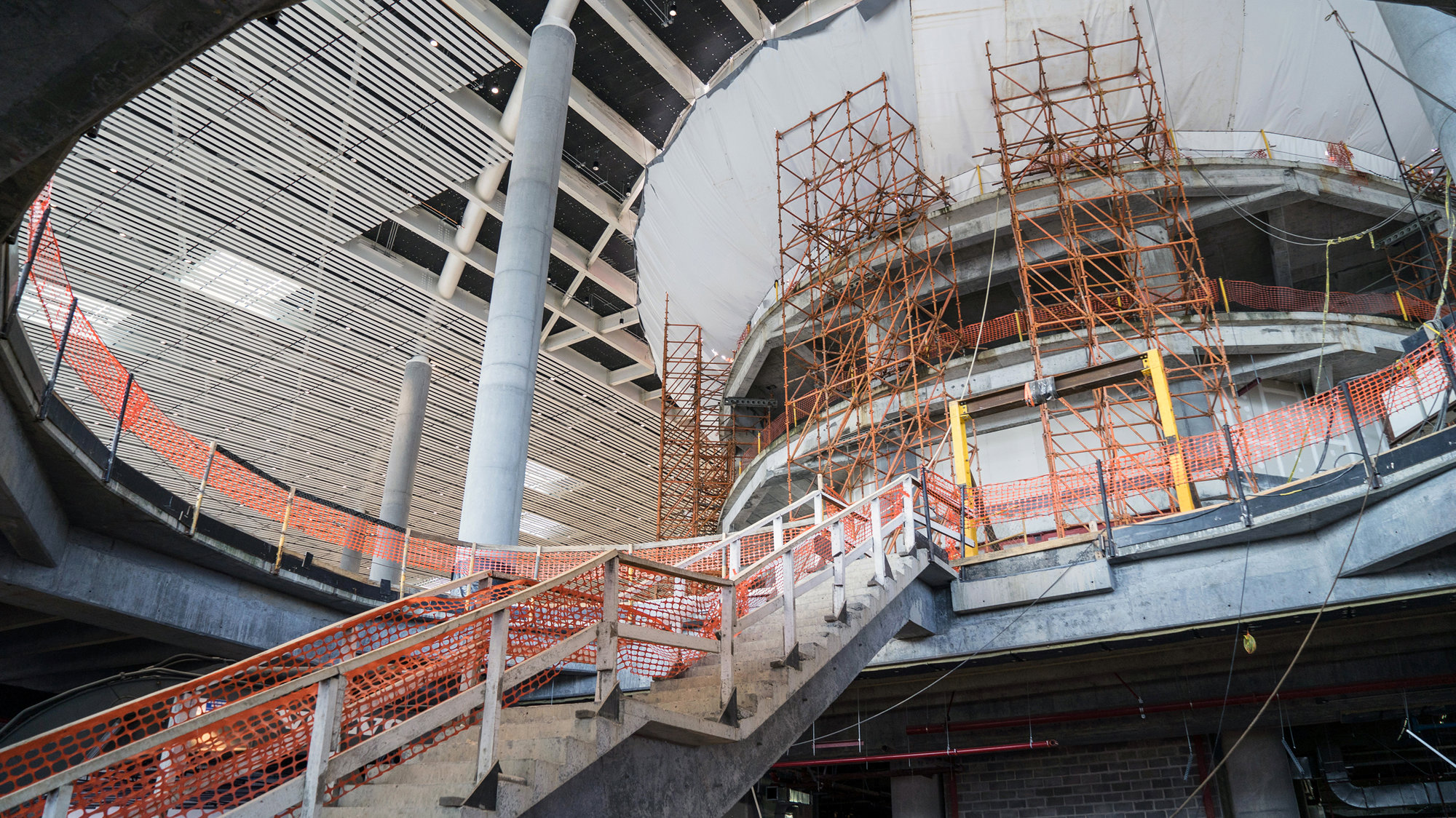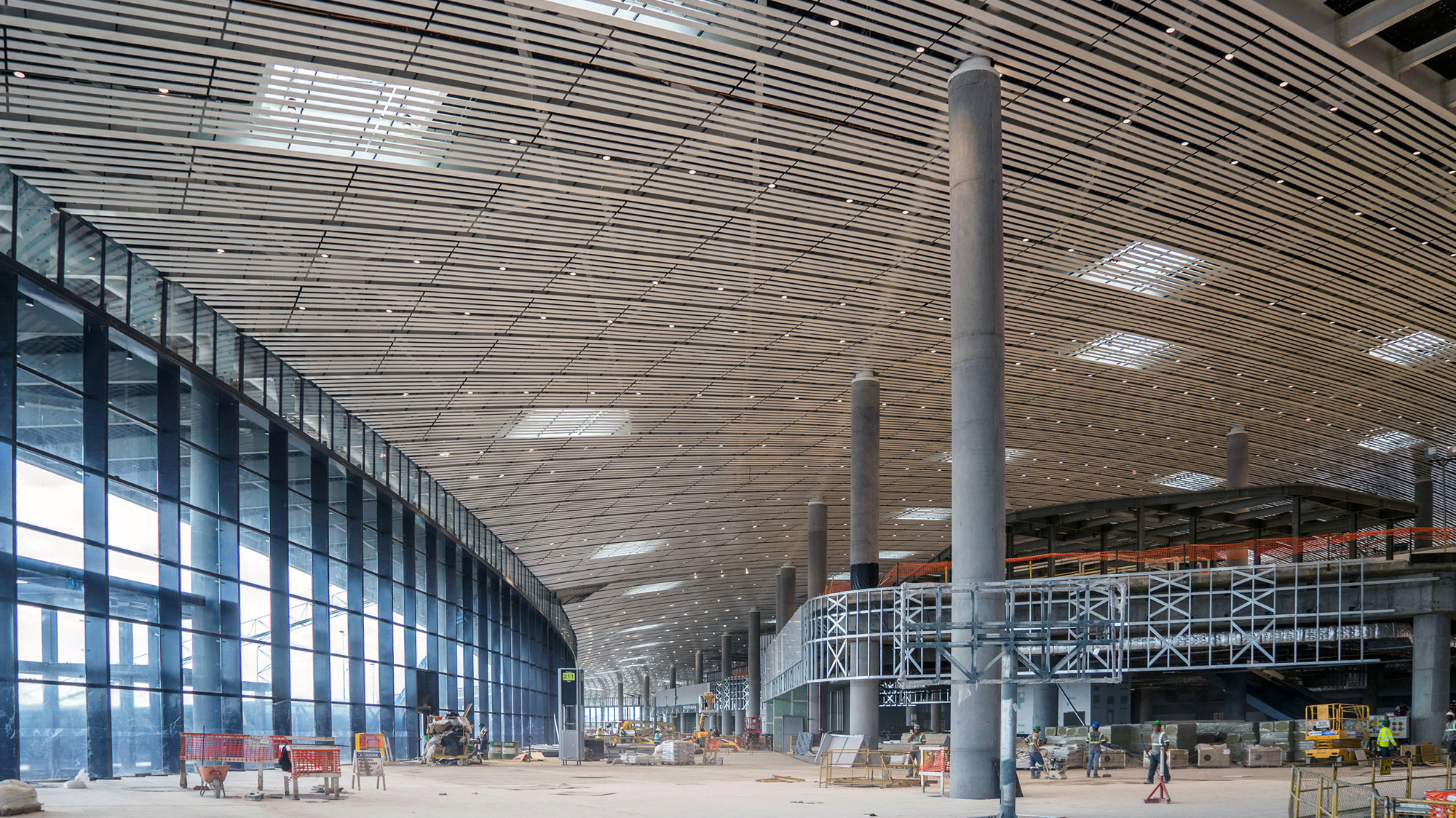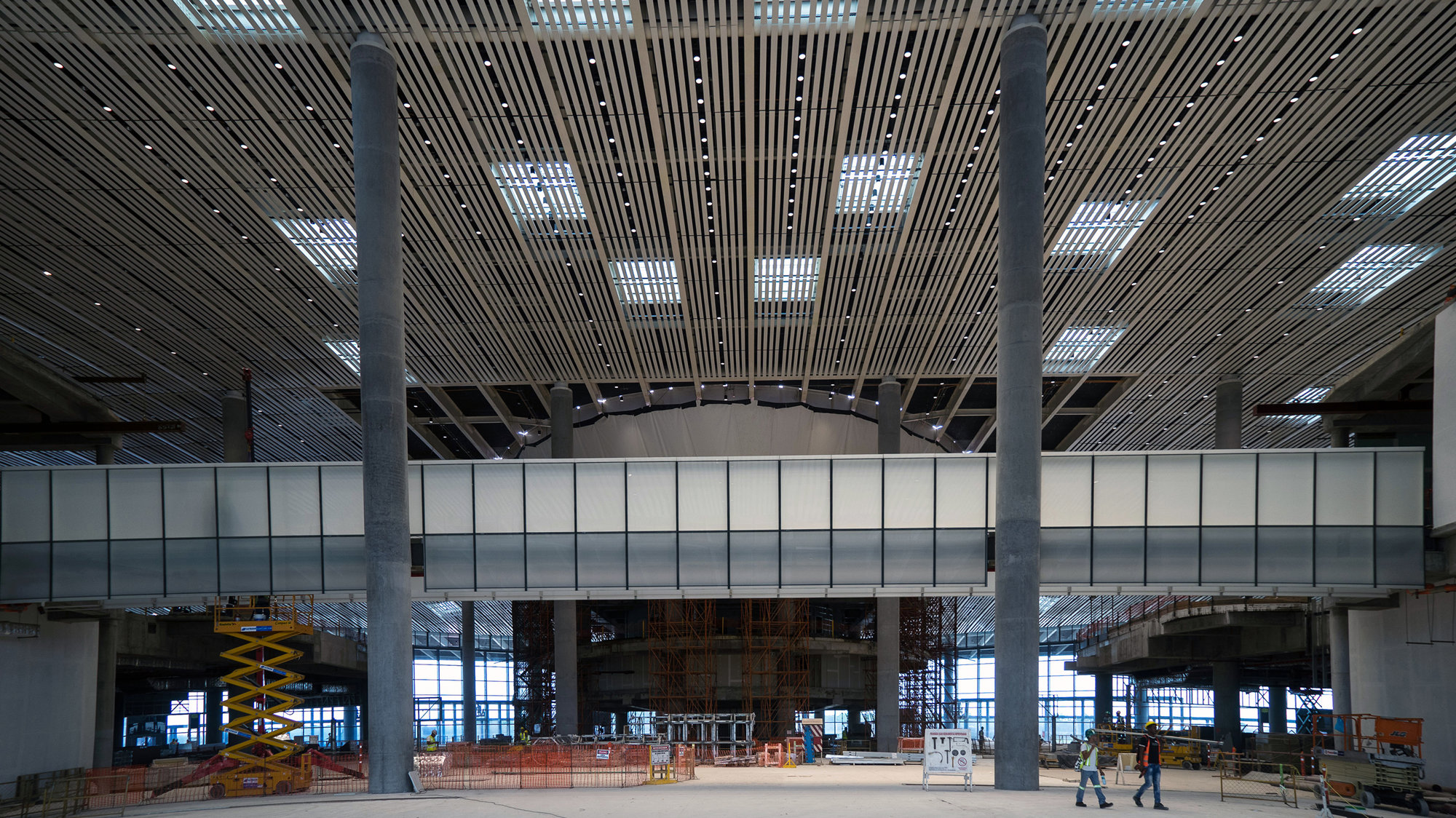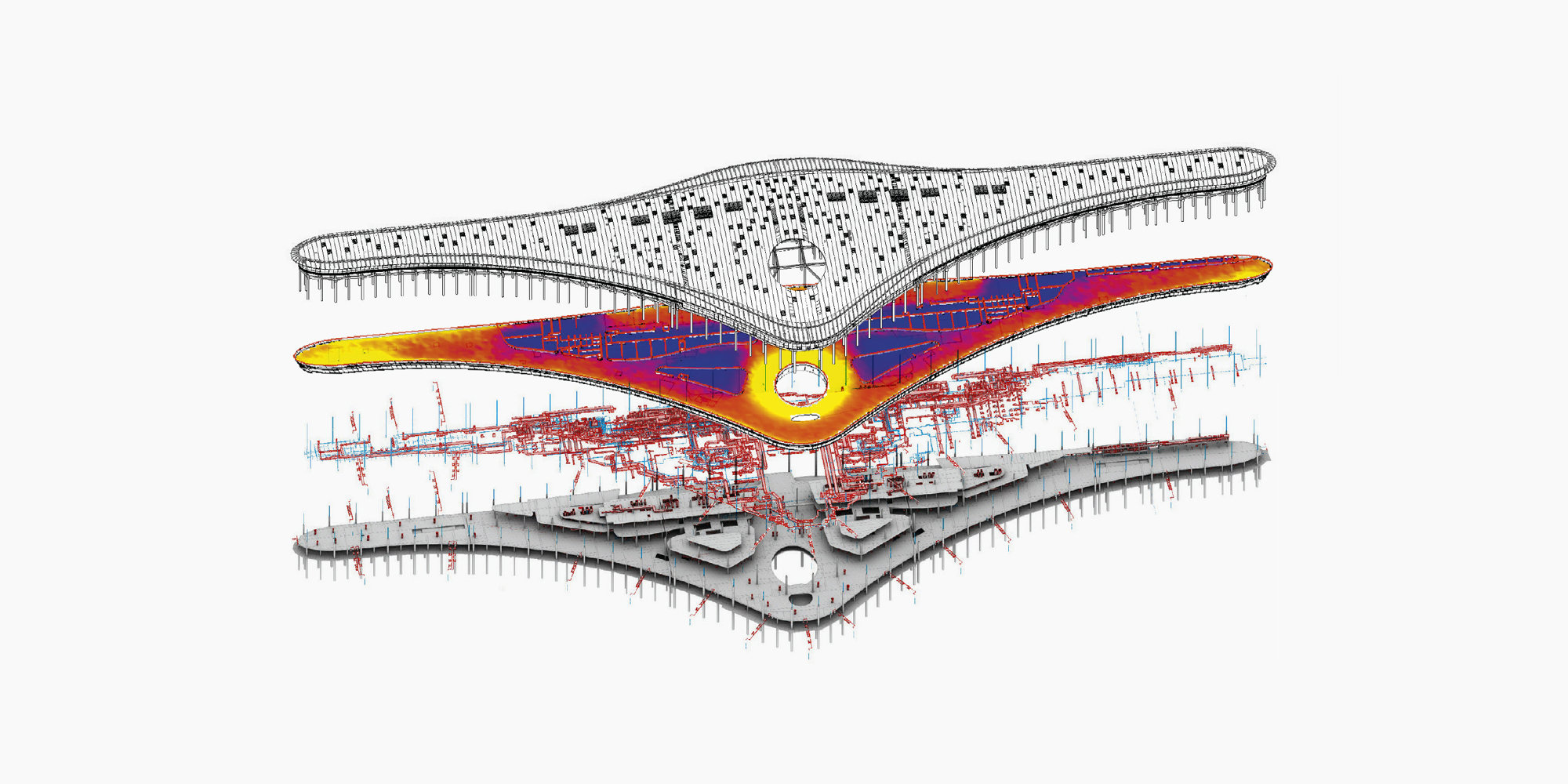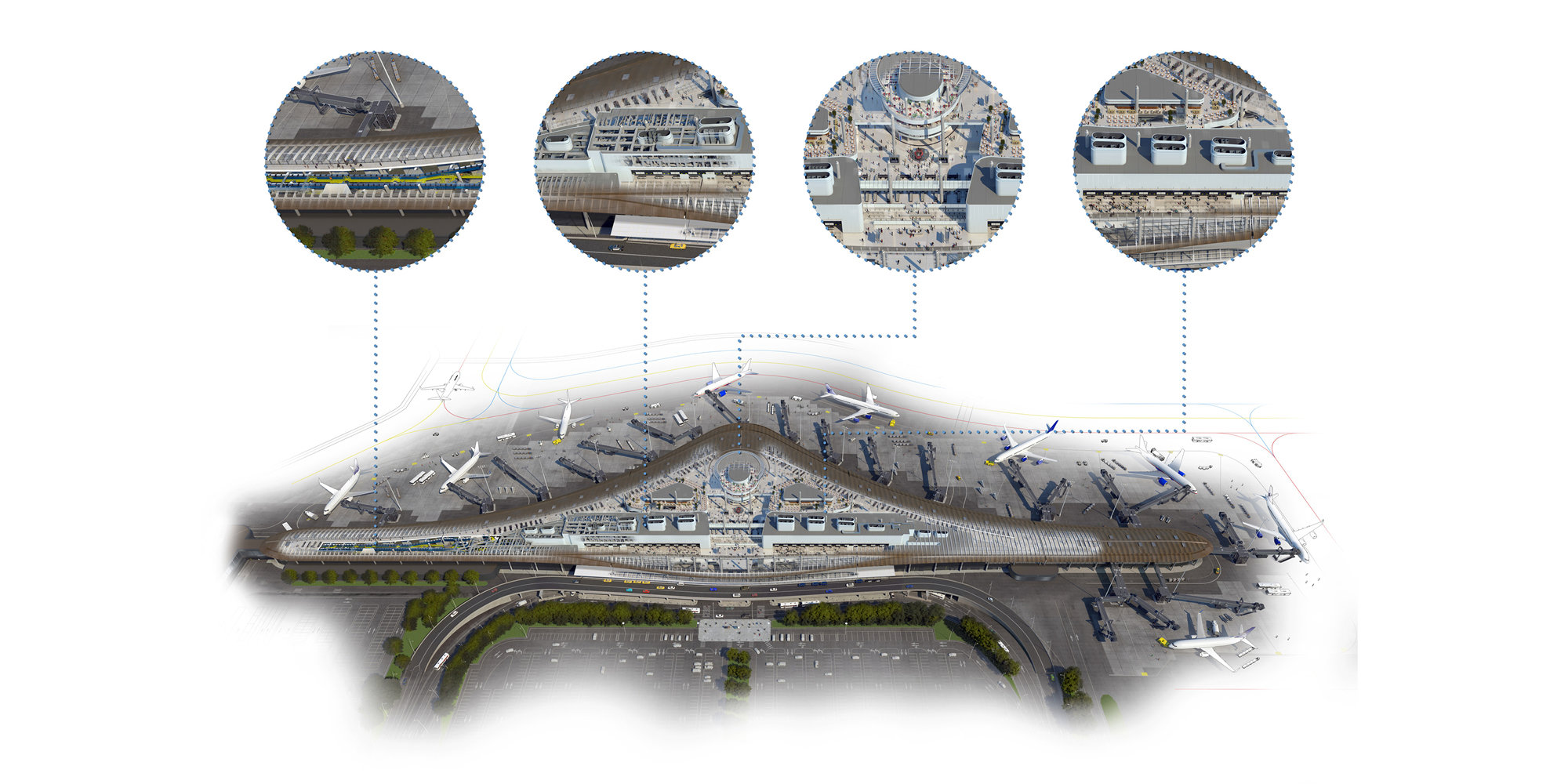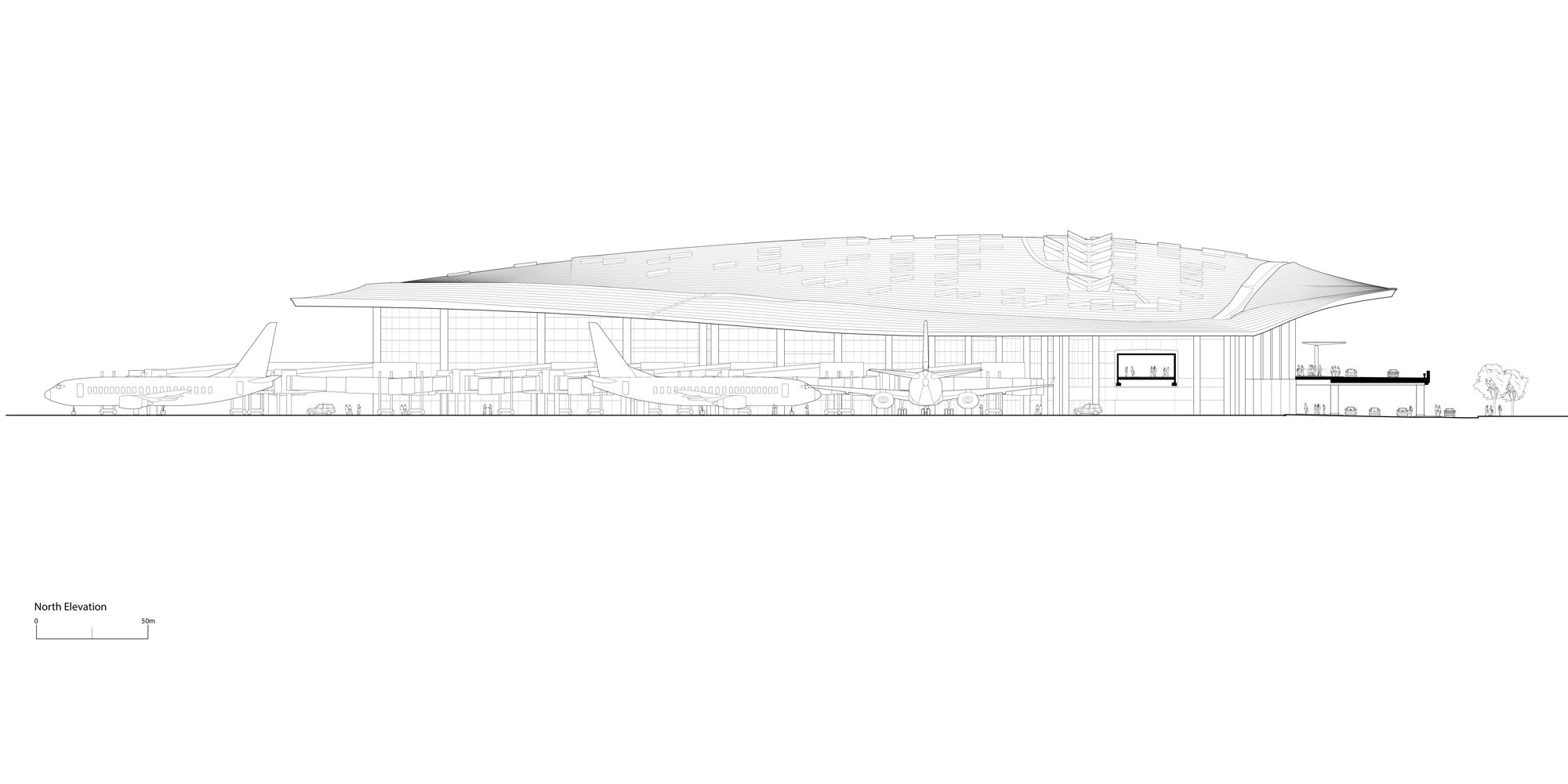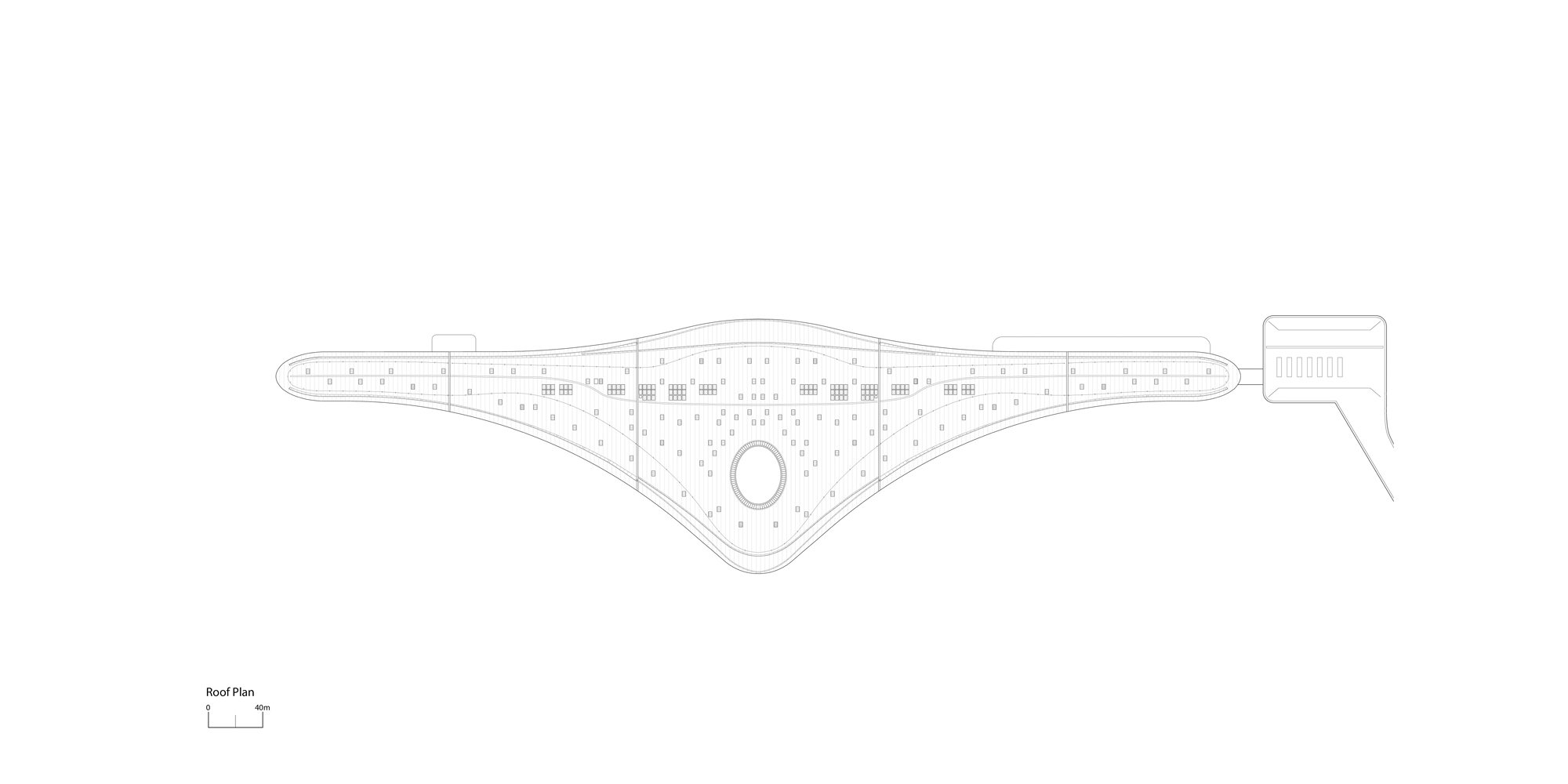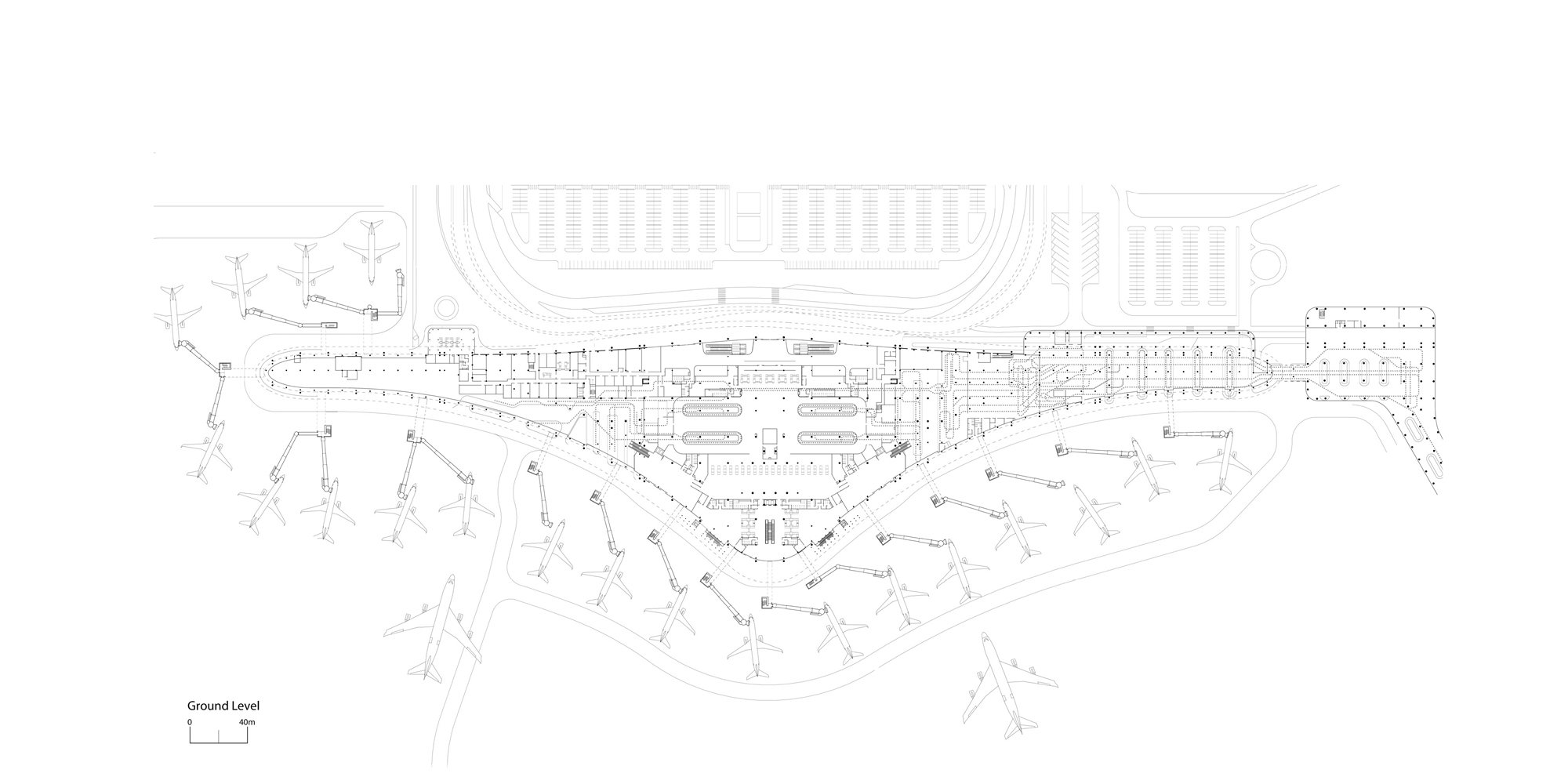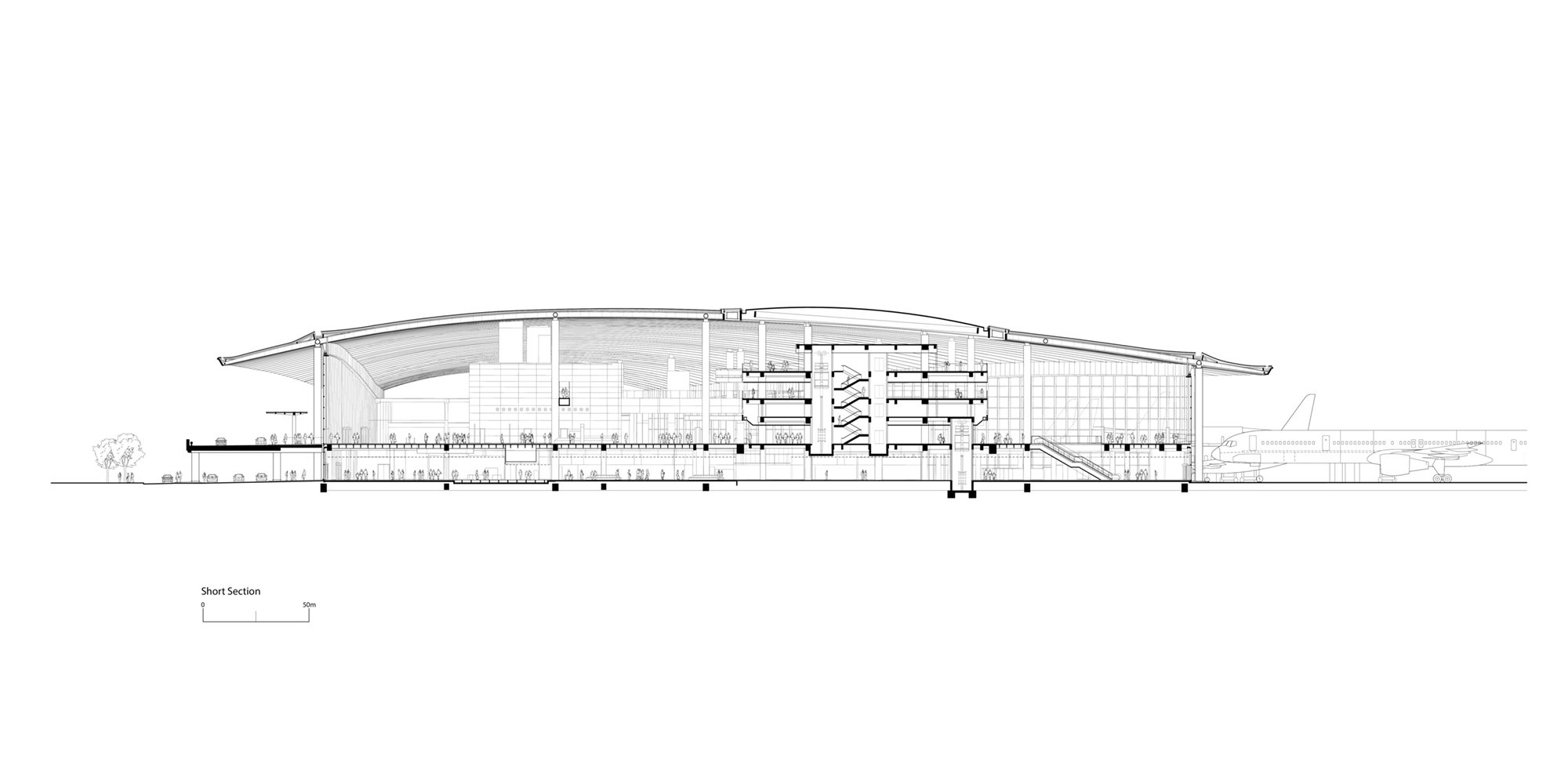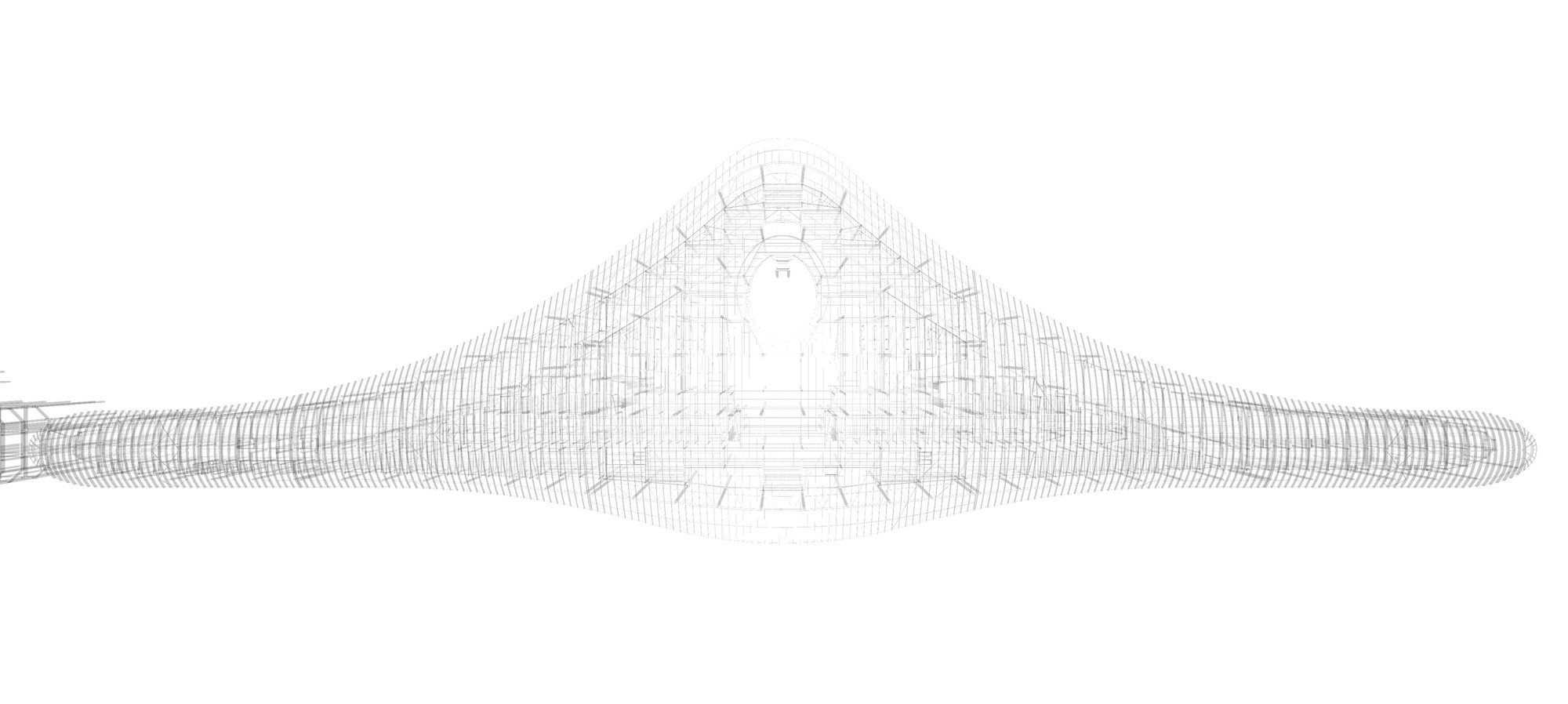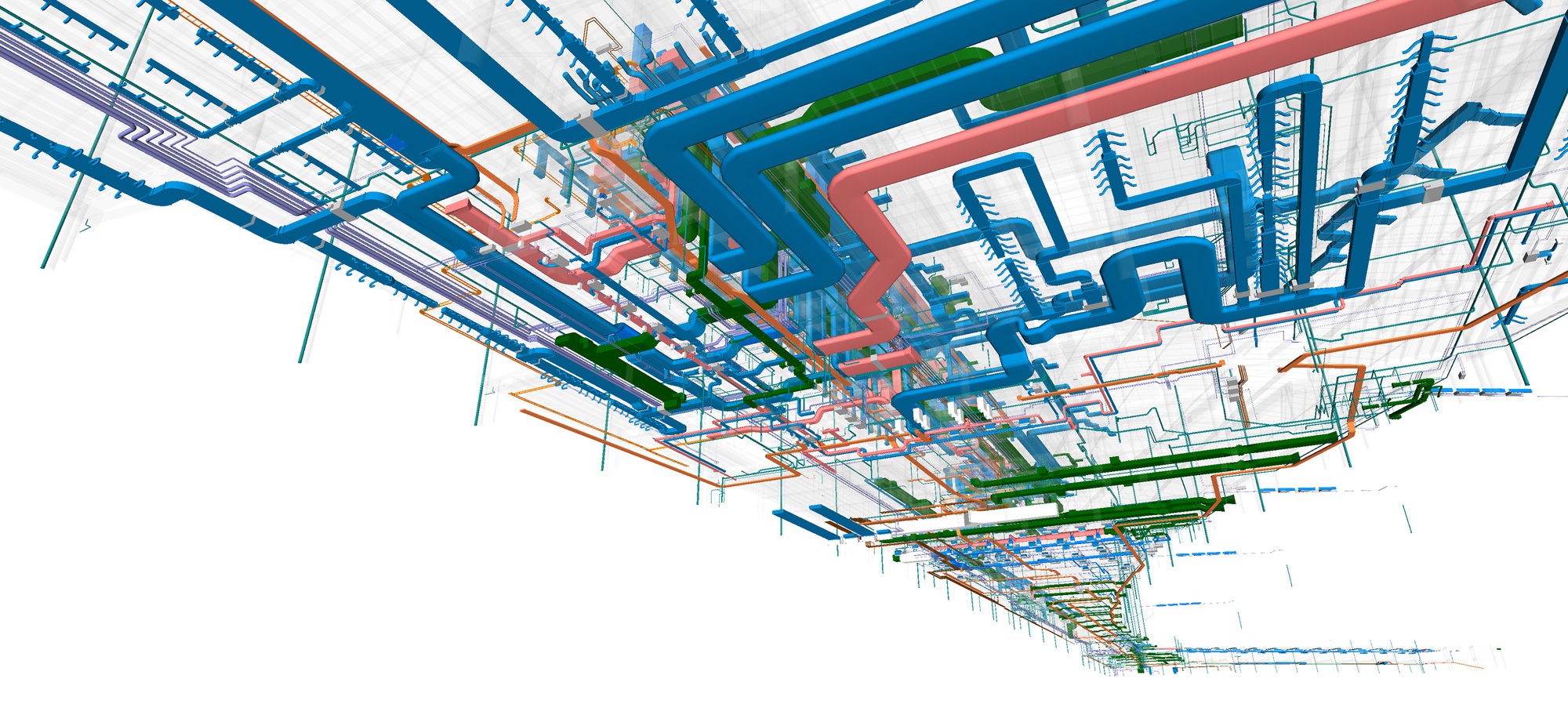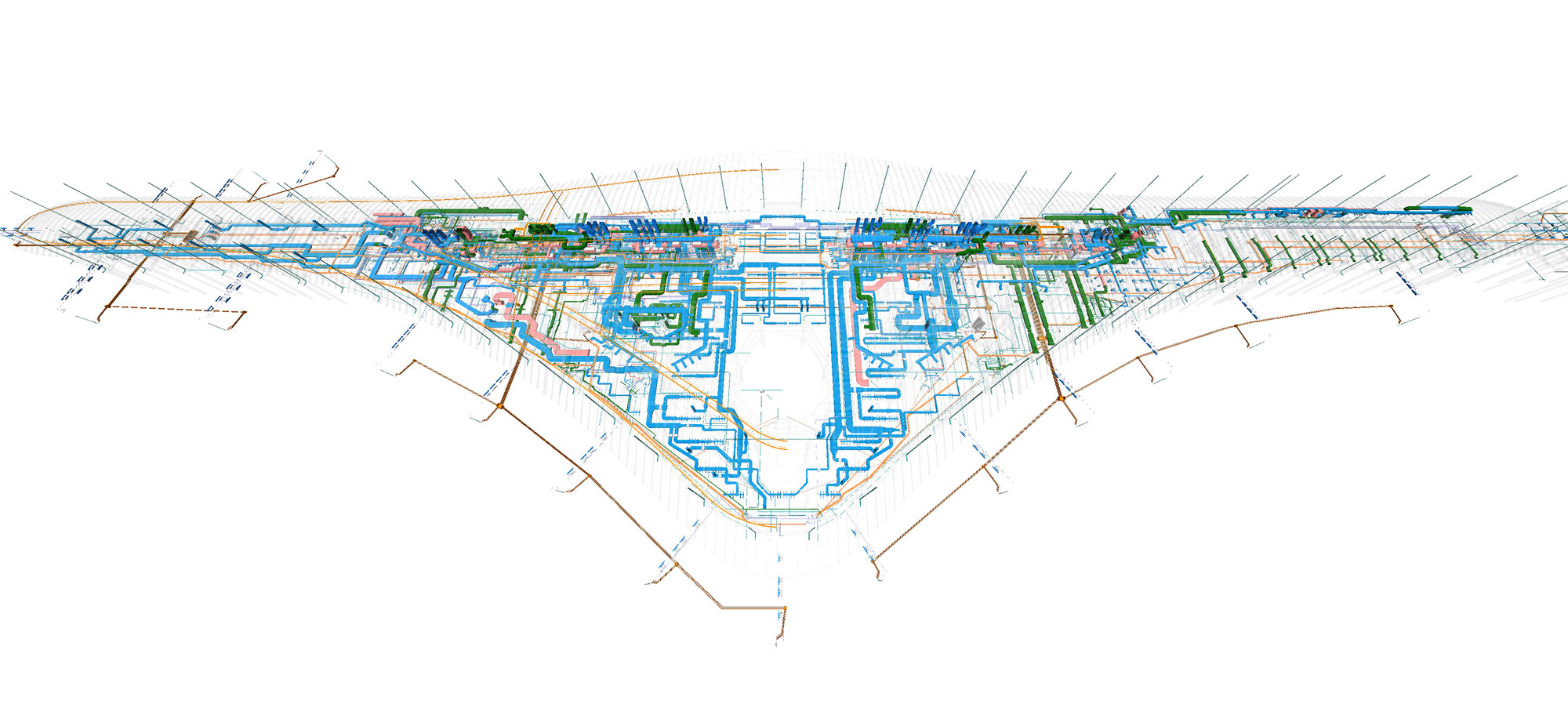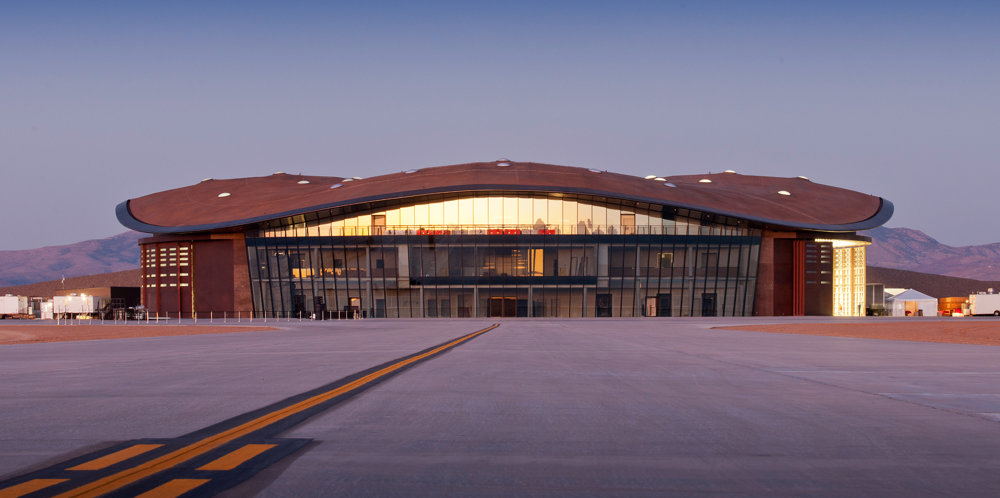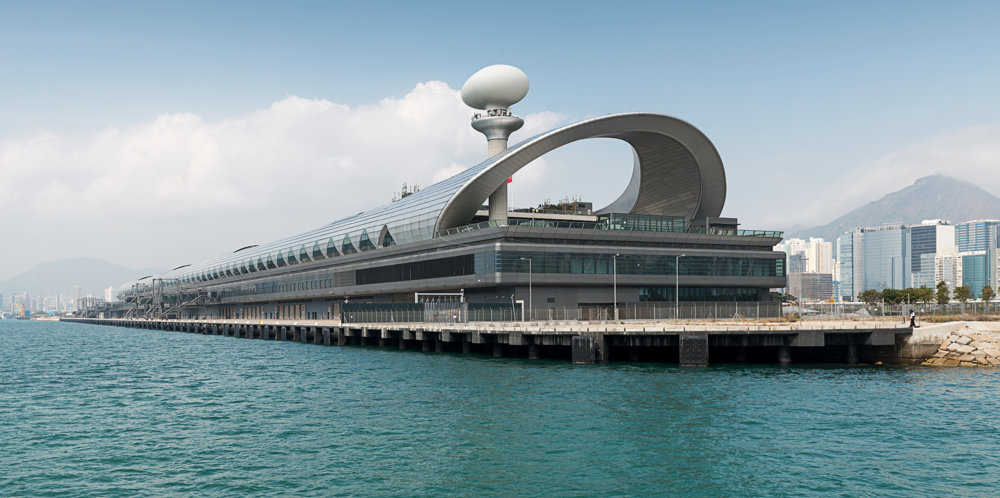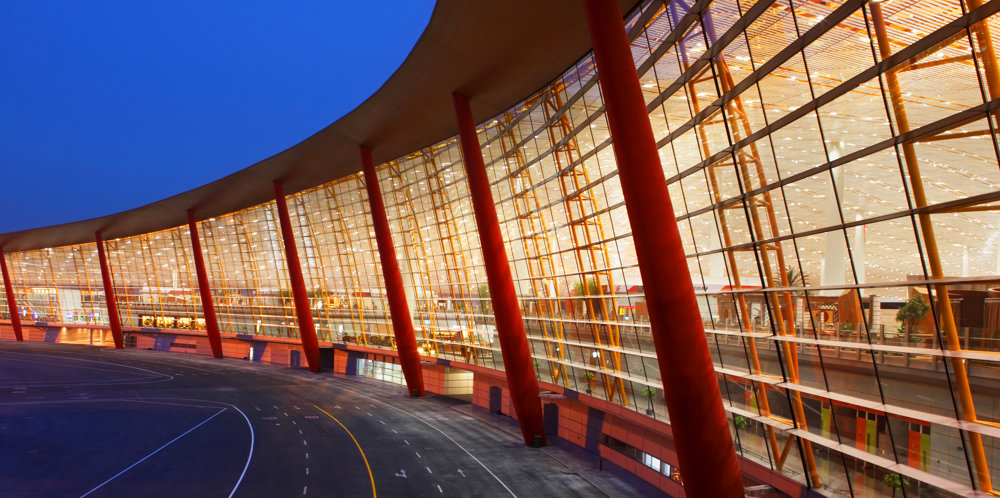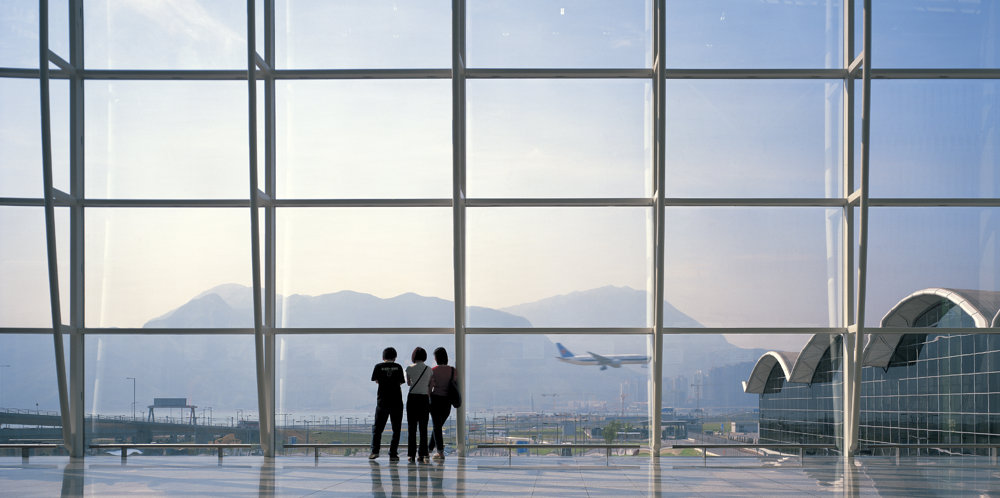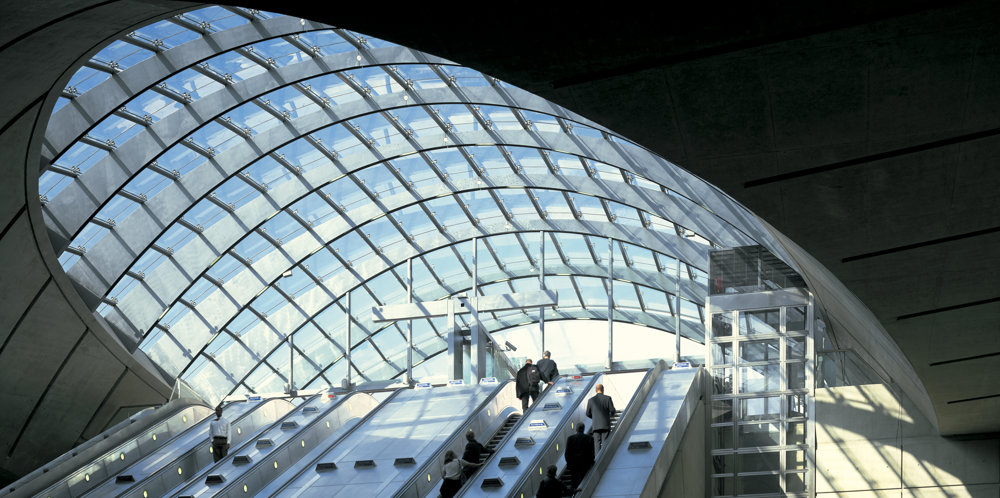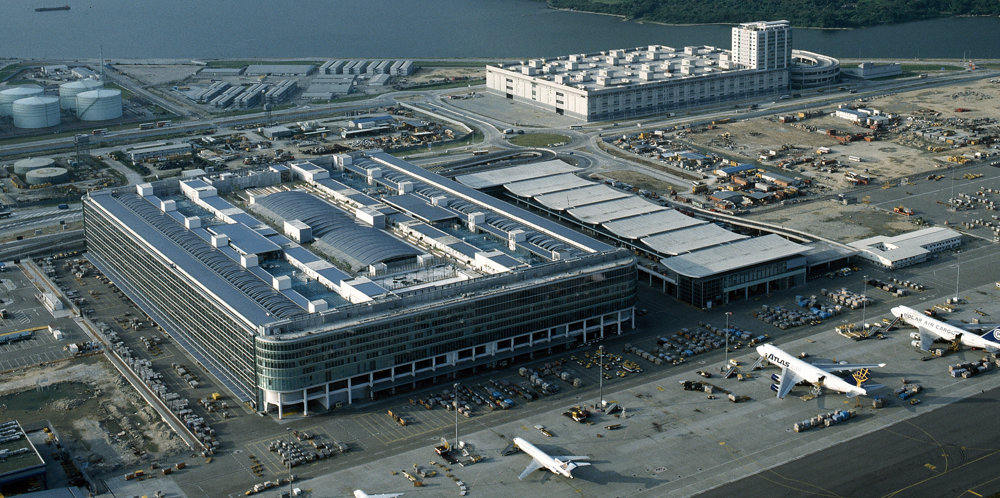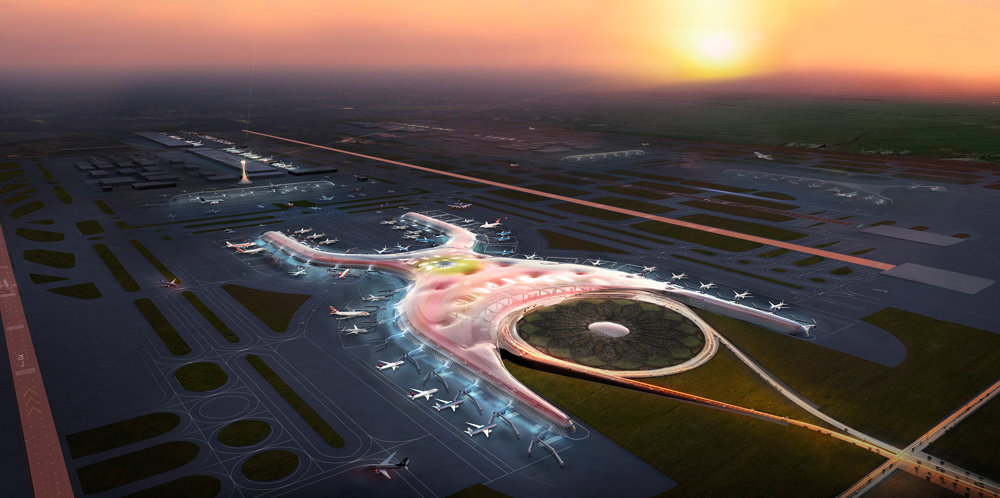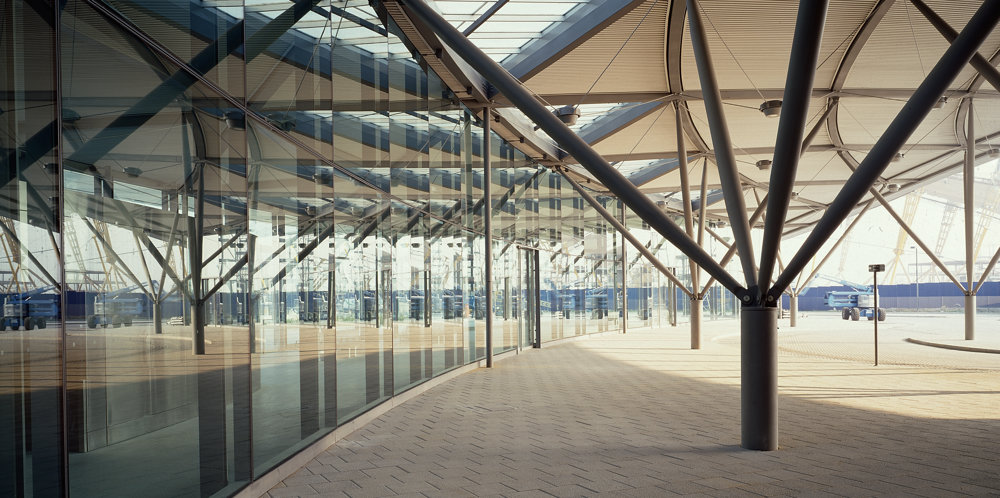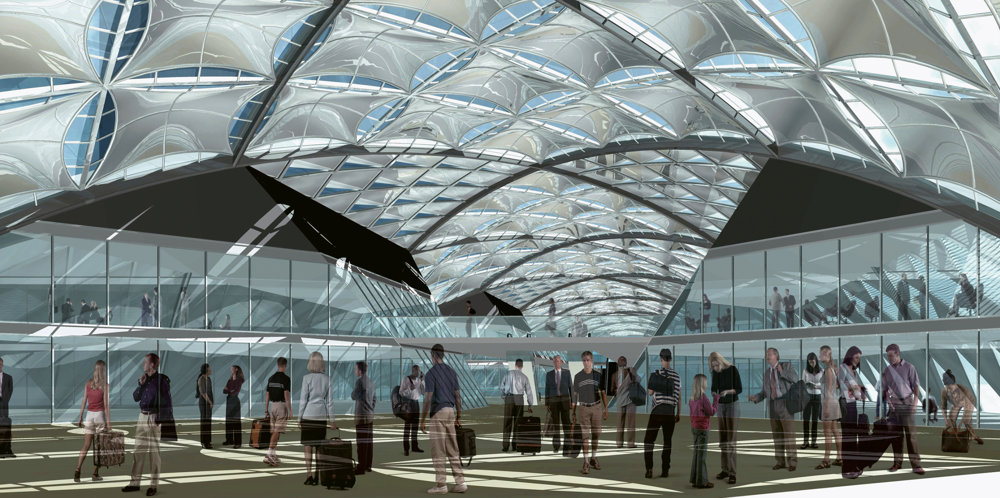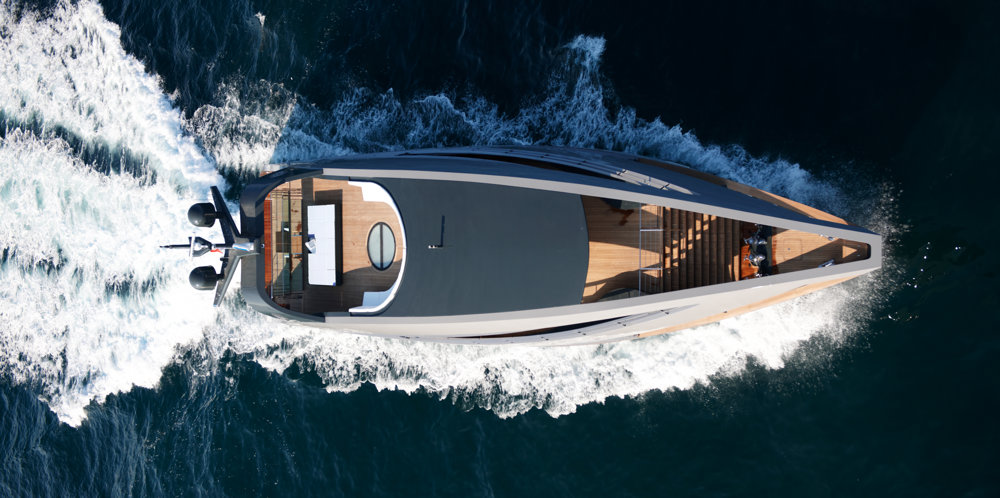The new Tocumen International Airport in Panama is set to increase capacity from 5.8 to 15 million passengers a year by 2022, establishing an important new hub for the Americas. The new terminal is designed to reflect the Panamanian landscape, evoking a unique sense of place to welcome visitors to the country and removing the anonymity of the international hub experience for transit passengers.
Two symmetrical wings of piers extend to the east and west from the central concourse, and the entire building is unified beneath an aerodynamic bronze-coloured roof. A warm interior materials palette and exposed beams complements the metallic tones of the roof, and glazed facades open the airport up to the airfield and landscape beyond. As the focus of a hub is on transfer passengers, the terminal’s planning minimises connection times, with strong visual connections across the airport to allow intuitive way-finding. Viewed in plan, the curve of the building’s facade has been carefully balanced to minimise walking distances, while extending to accommodate a large number of aircraft stands.
Engineering and architecture have been conceived together, resulting in a comprehensive environmental strategy that balances complementary active and passive measures. Openings in the roof have been strategically located to allow daylight to penetrate the furthest reaches of the building. A careful selection of solar control glazing coupled with a deep overhang provide excellent daylight and views to the outside while reducing solar gain, thus minimising the need for mechanical cooling. The smart HVAC design responds to occupancy patterns, cooling the lower occupied zones of the concourse whilst maximising comfort and wellbeing for the passengers.
Located in a seismic region, the terminal was designed following the state-of-the-art performance-based seismic structural design methodology. The structure features an innovative ‘fuse’ detail at the top of the reinforced concrete columns in order to protect the architecturally exposed steel roof from the large forces that occur during an earthquake. Fast-track project delivery allowed installation of piles and construction of the foundations to start only five months after project kick-off.
